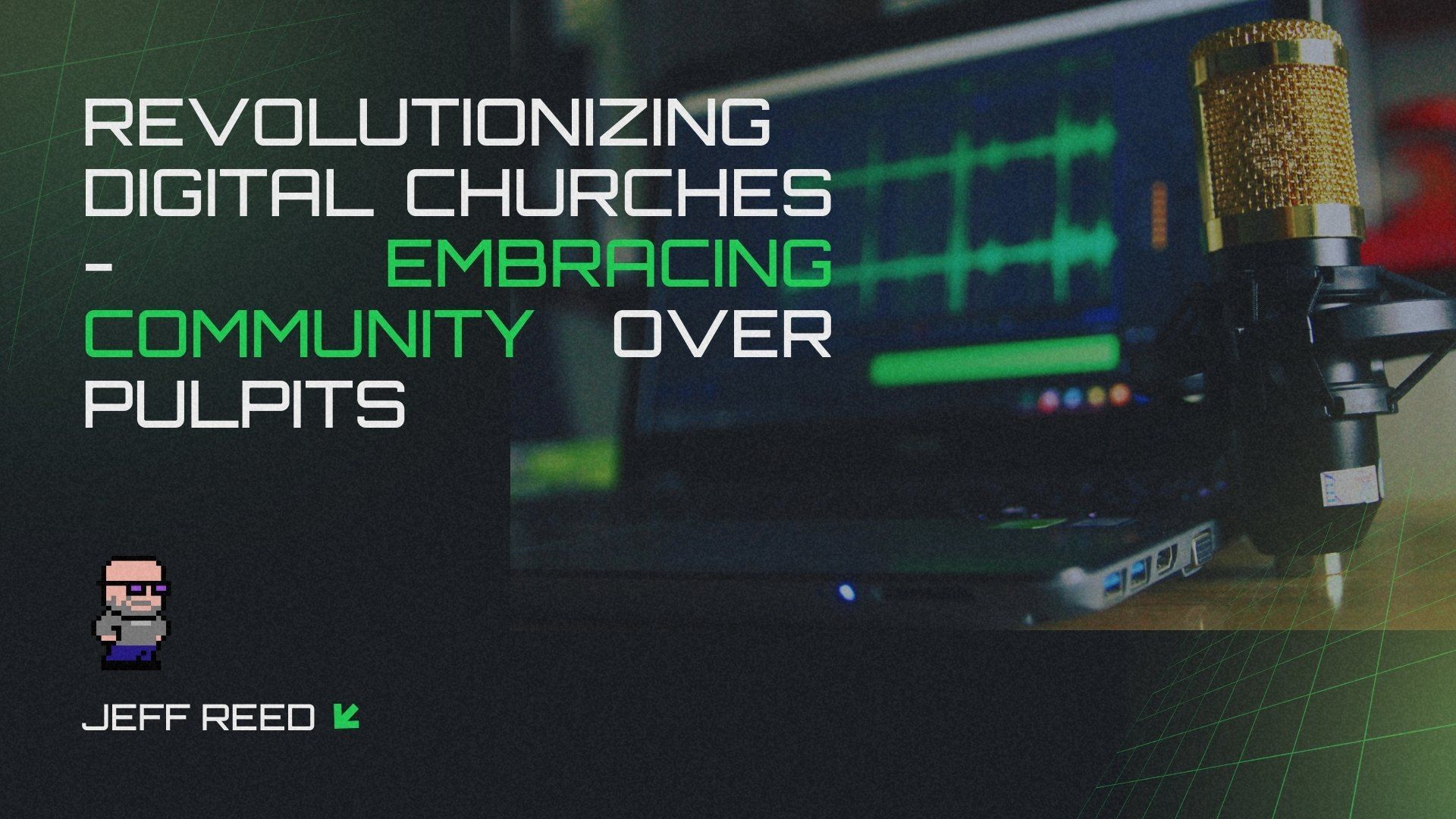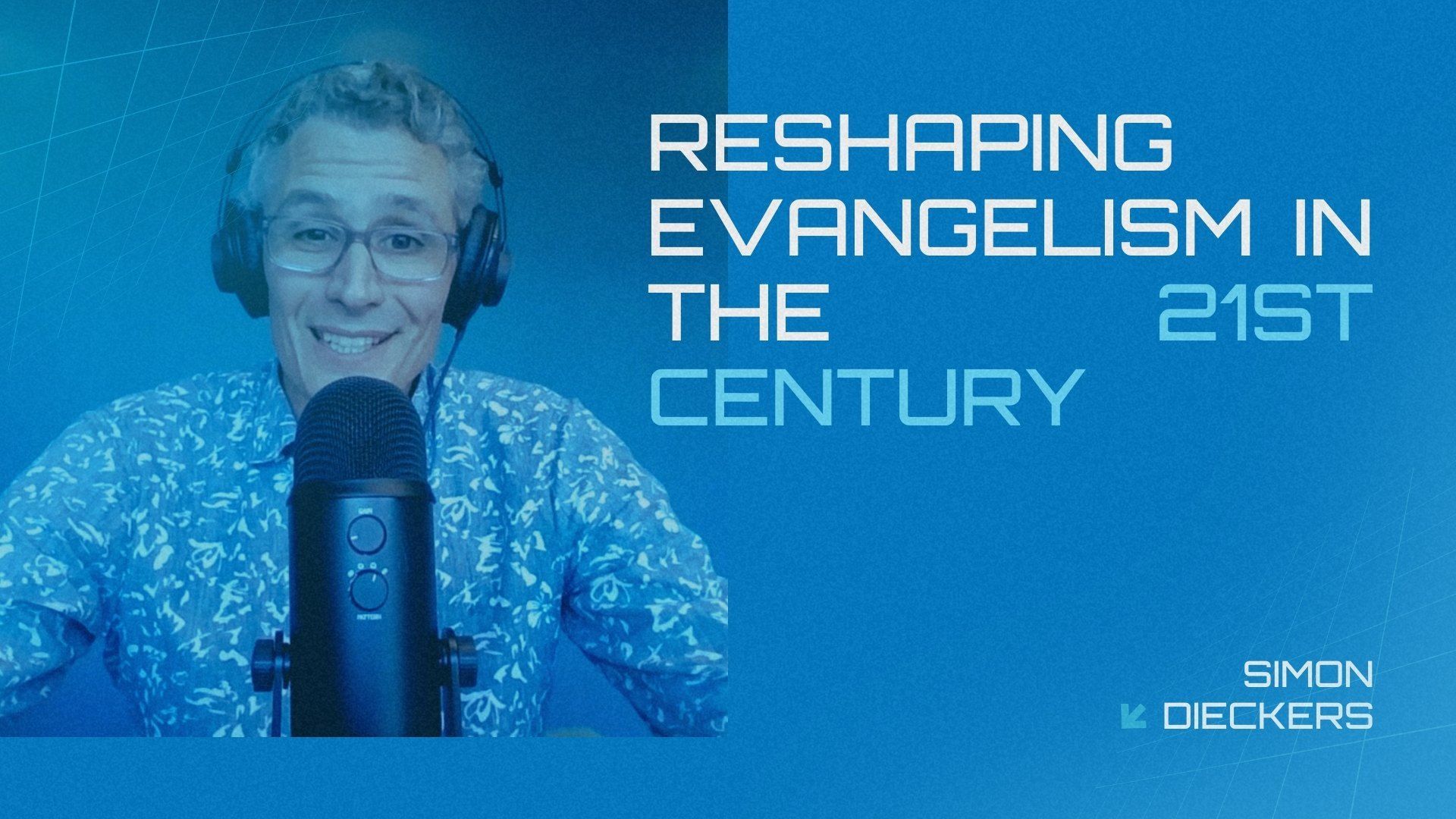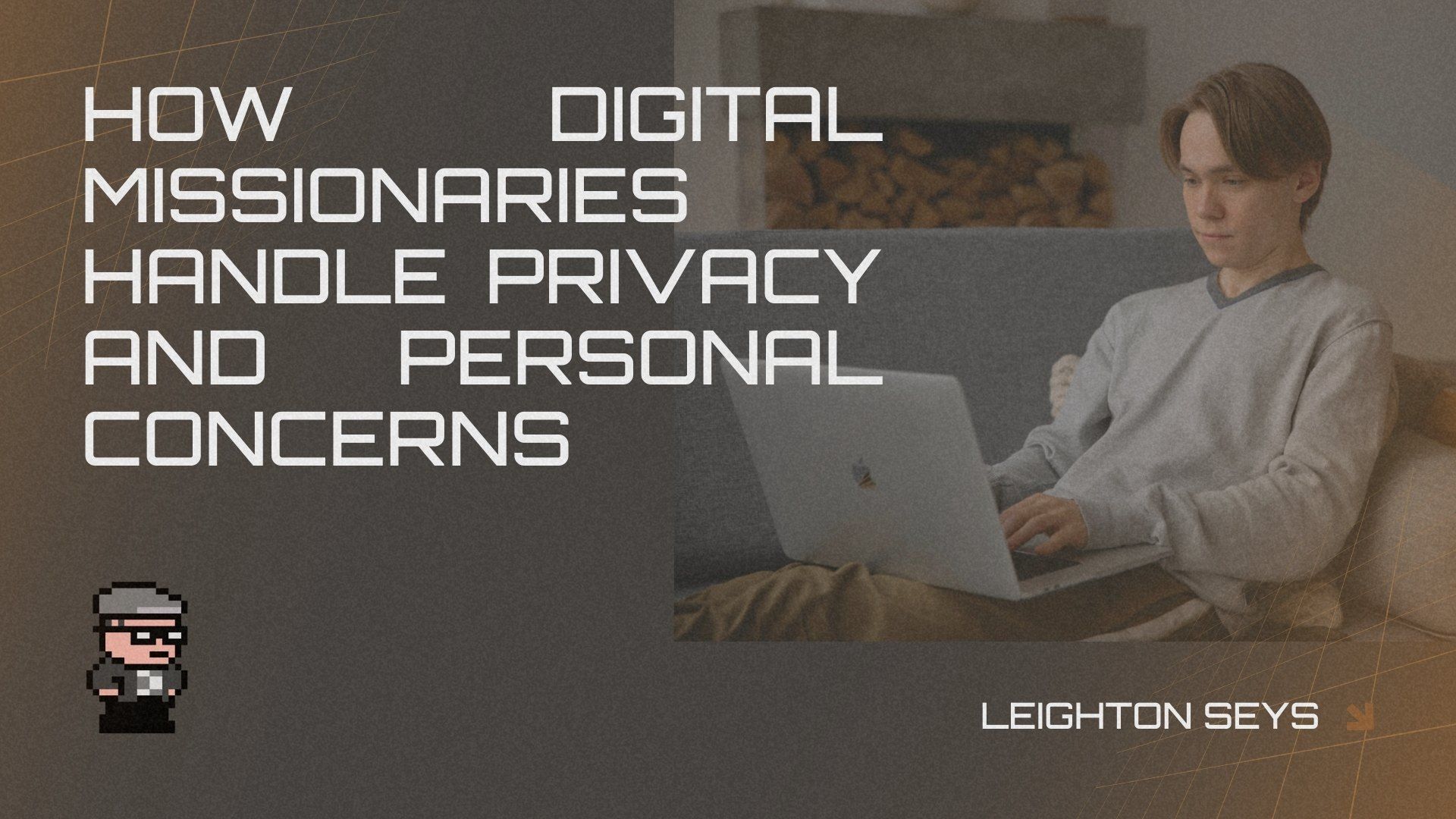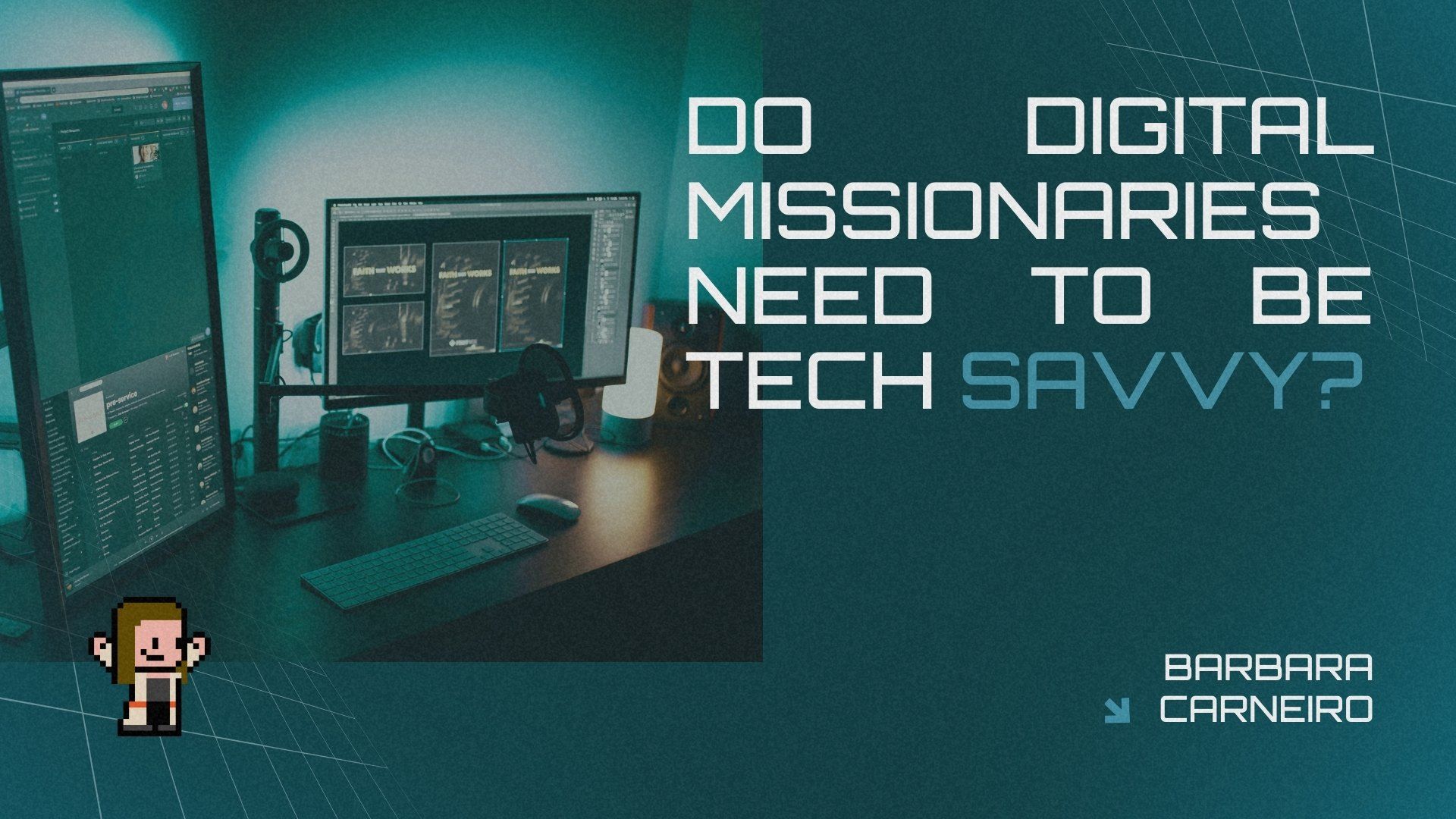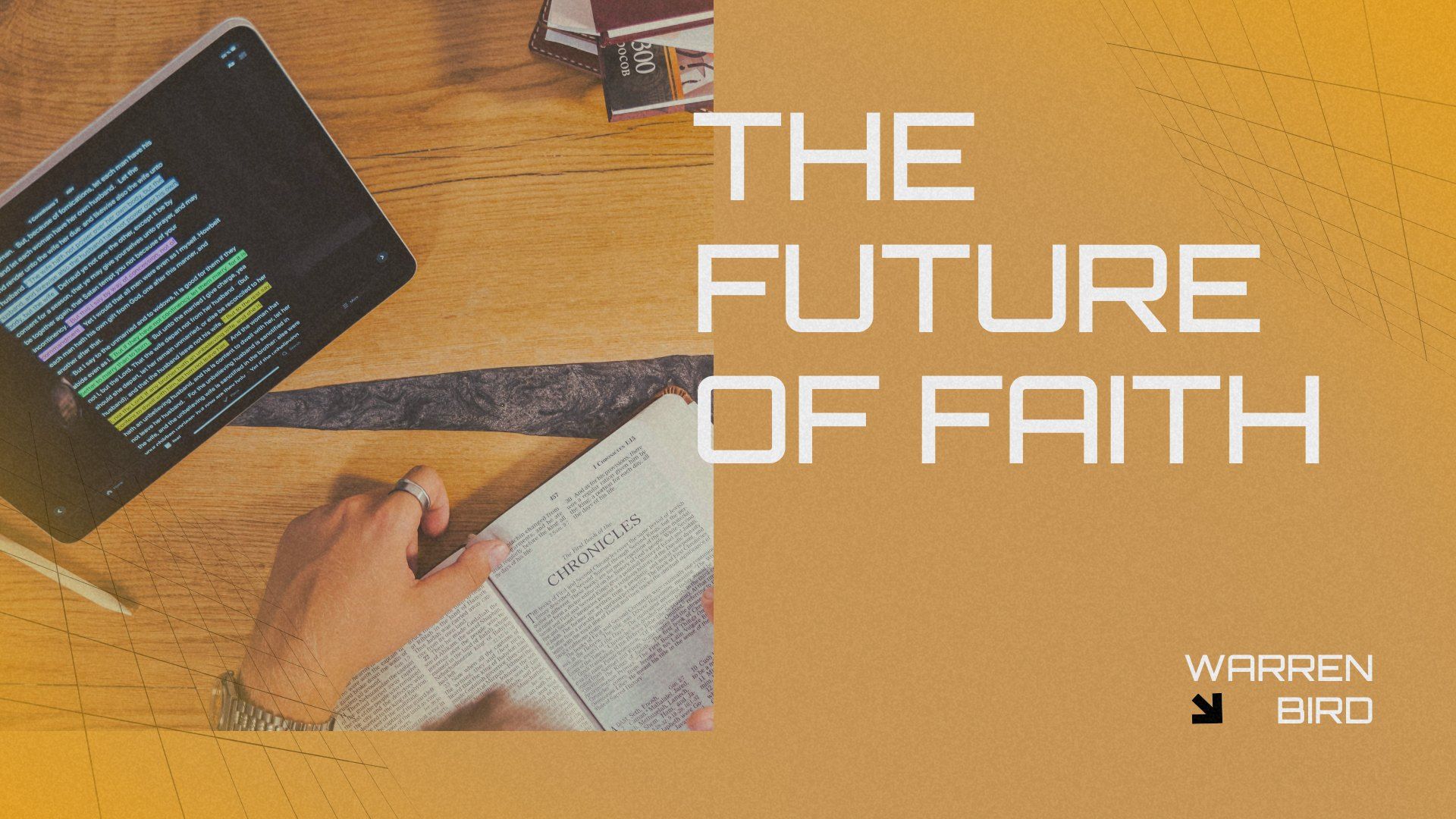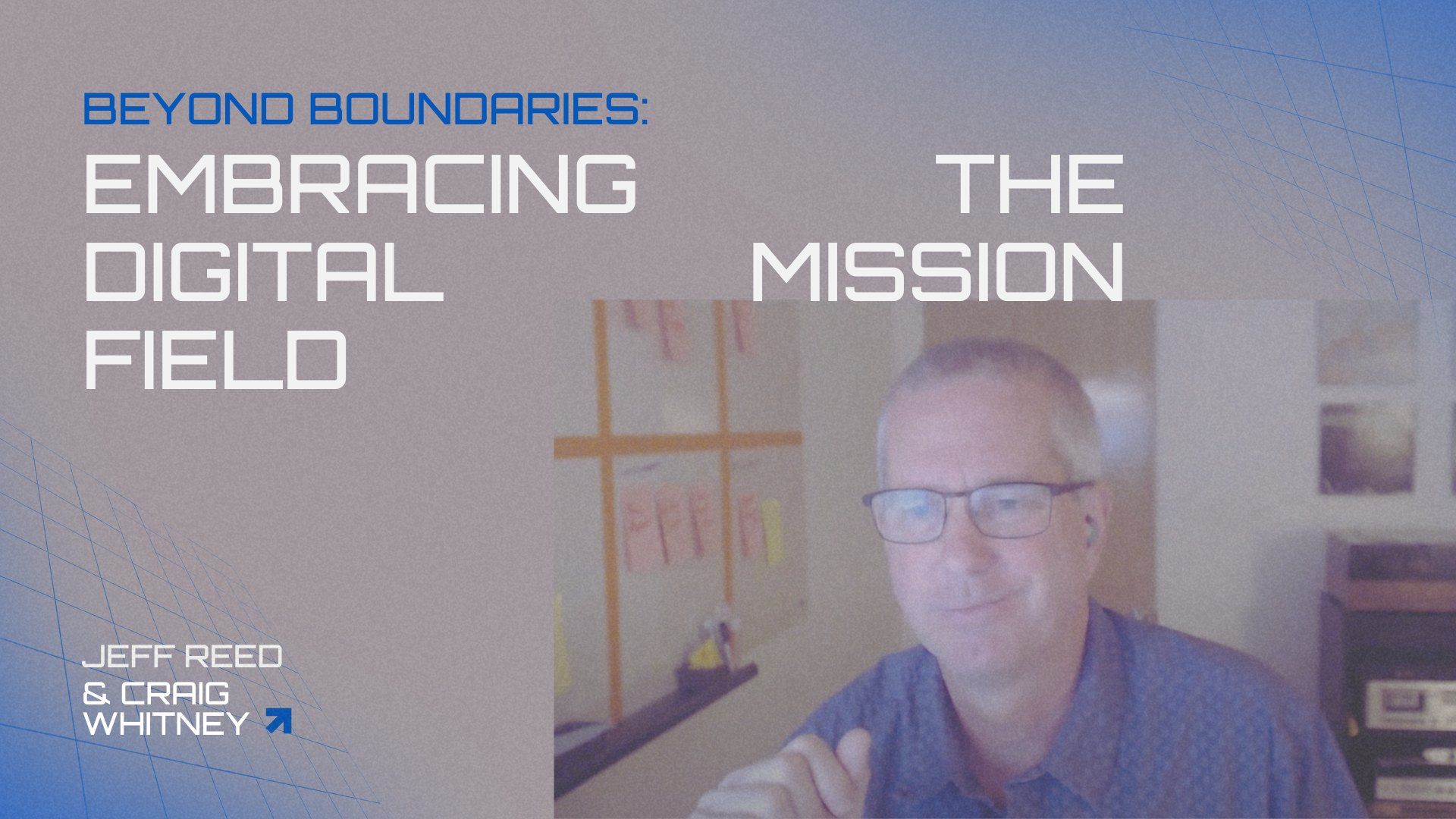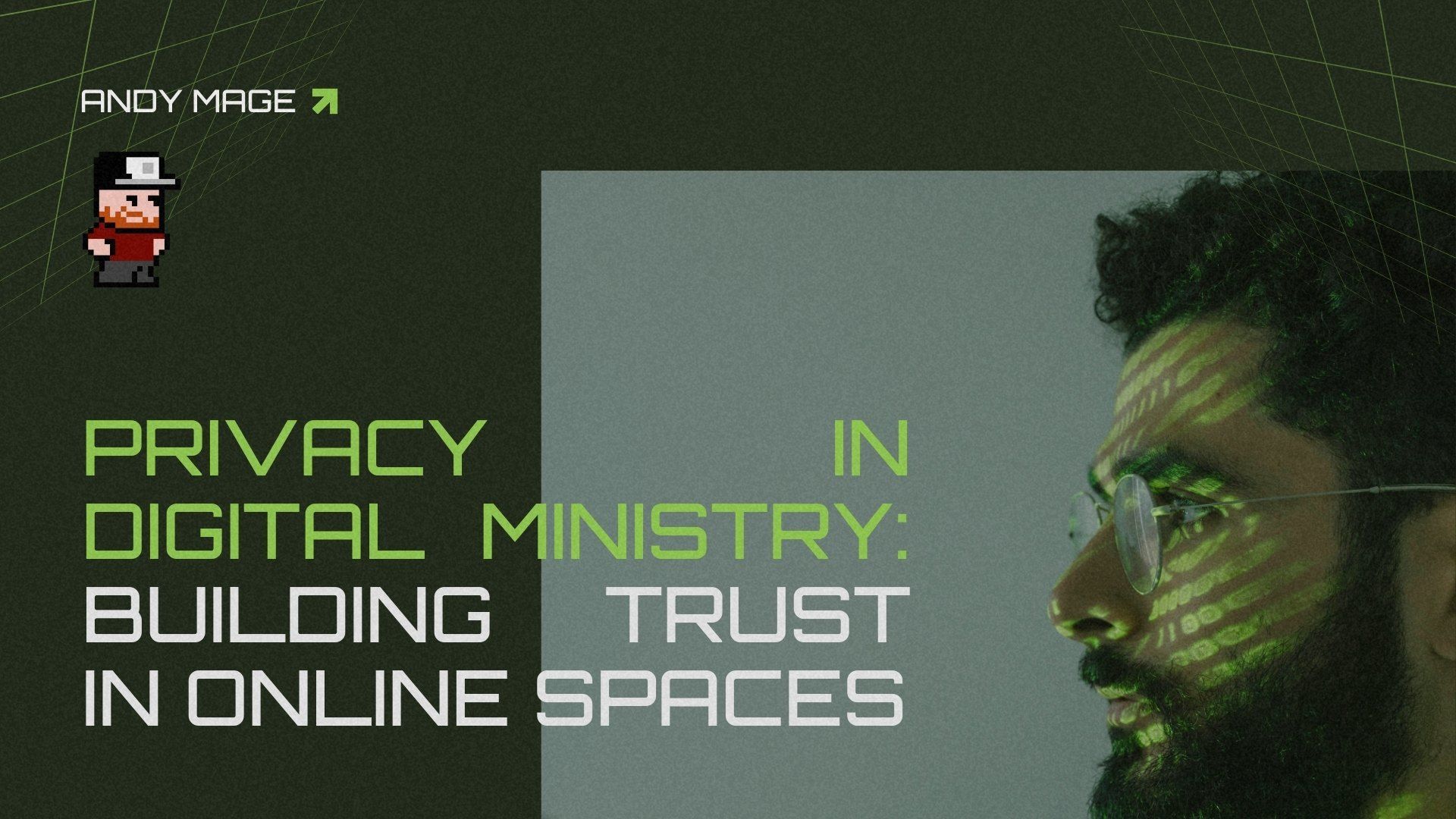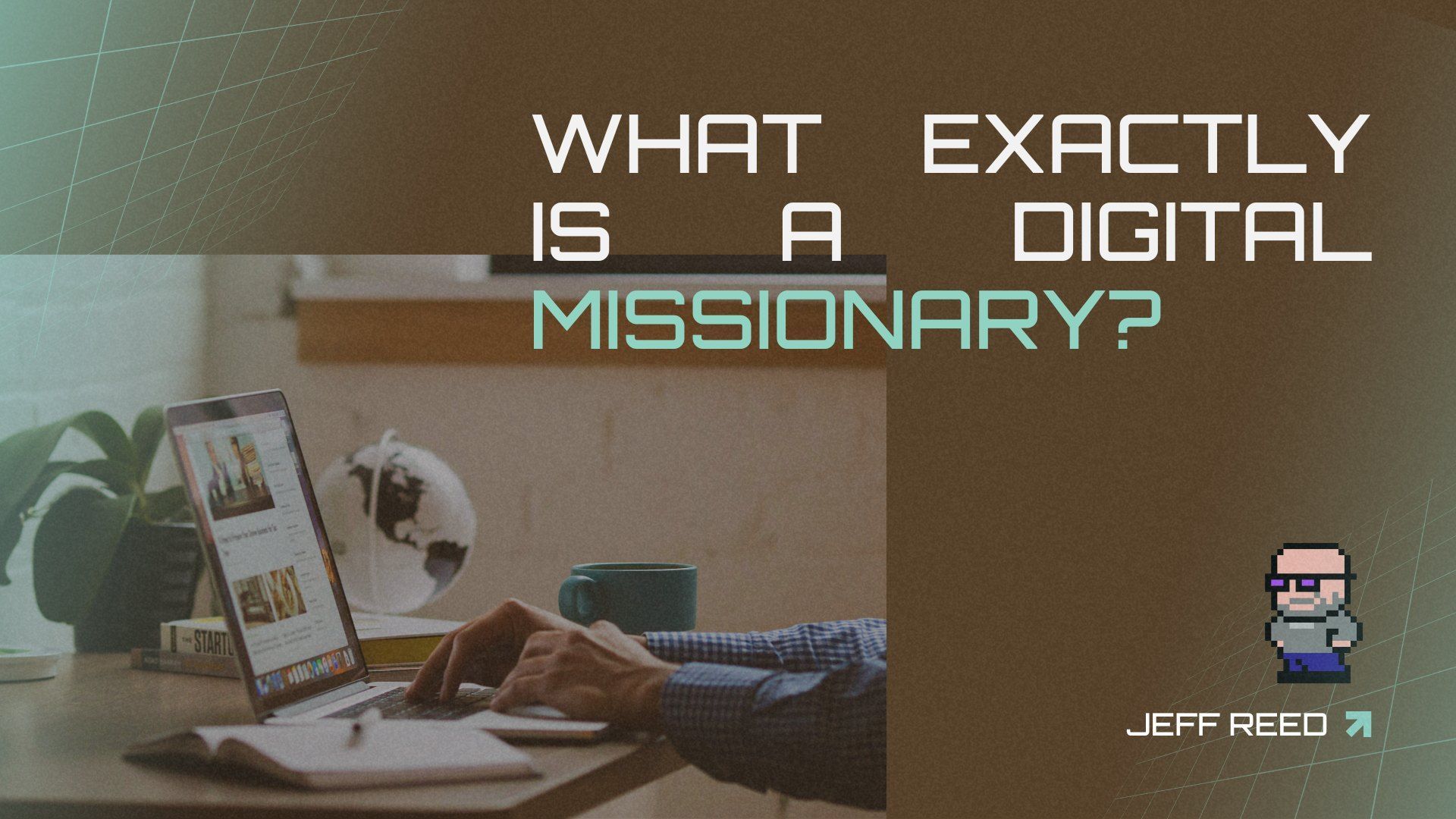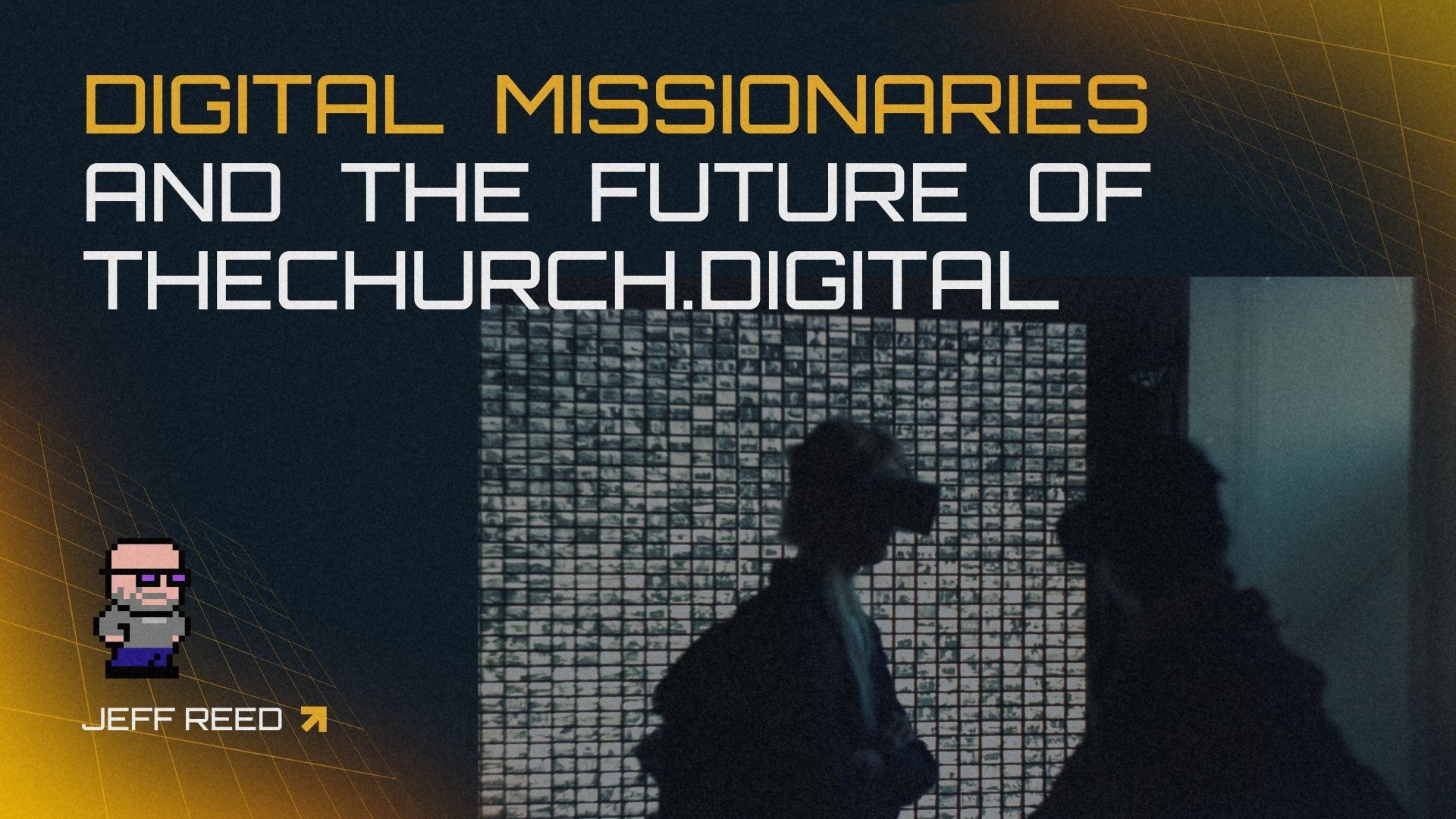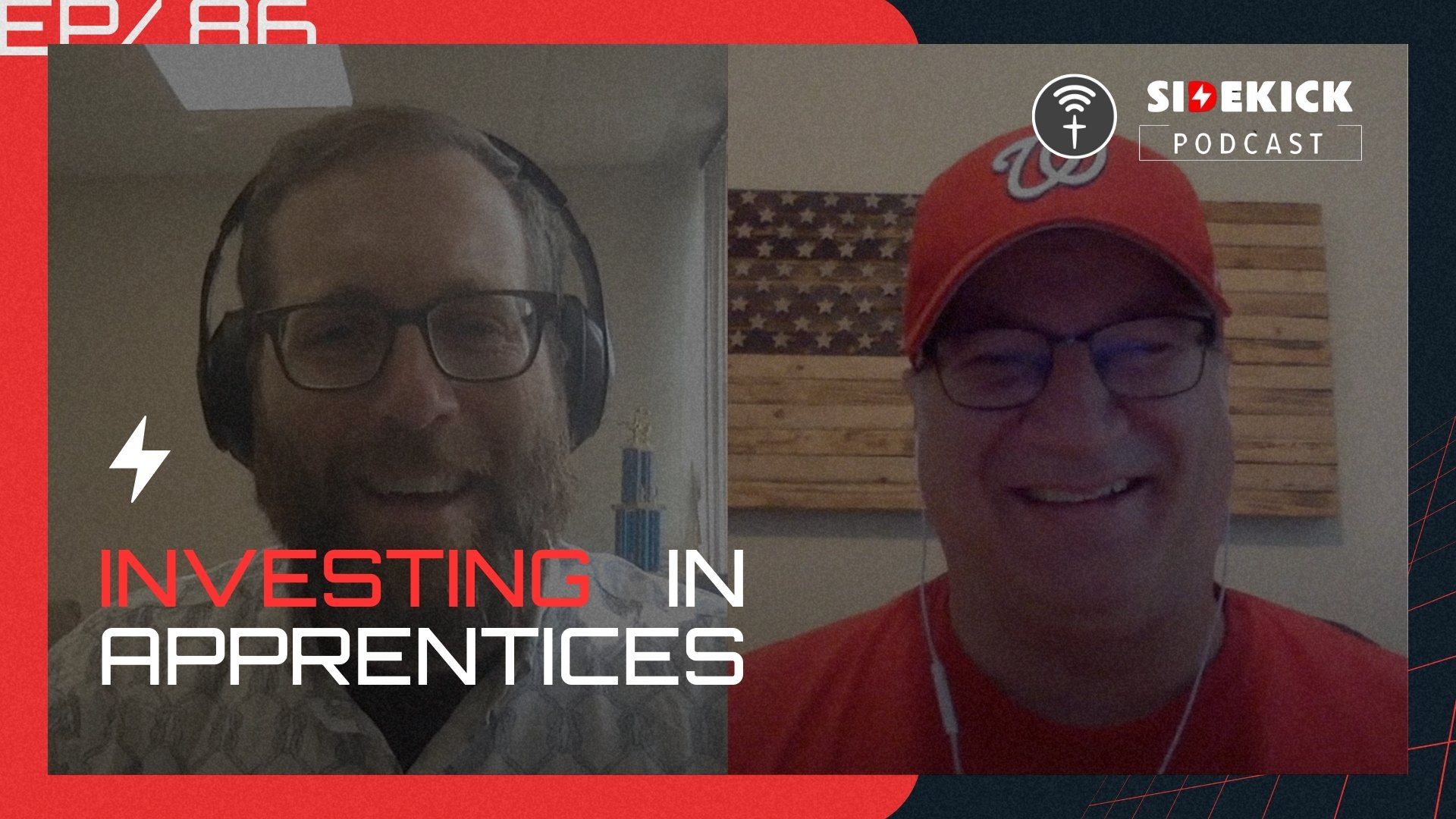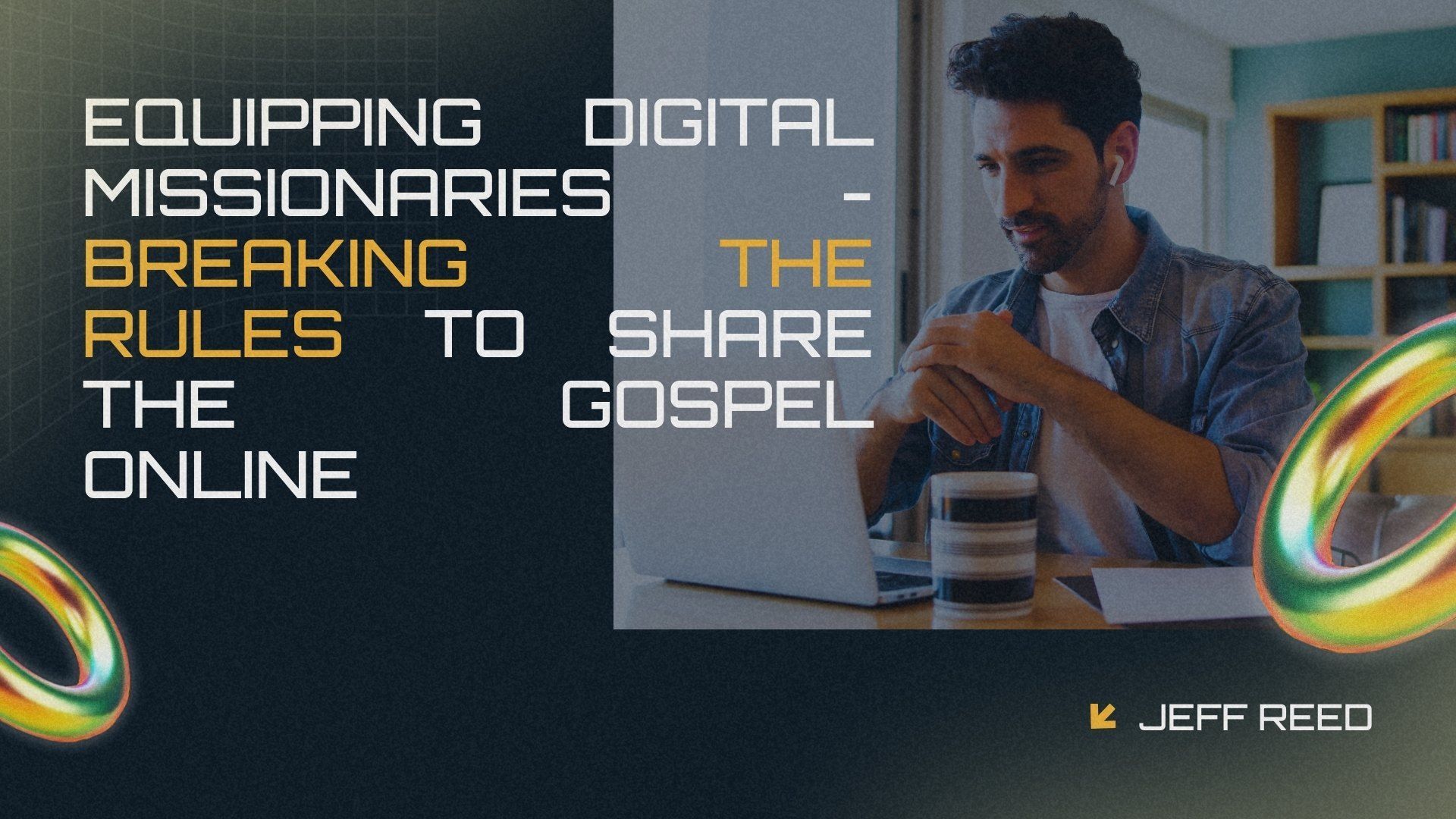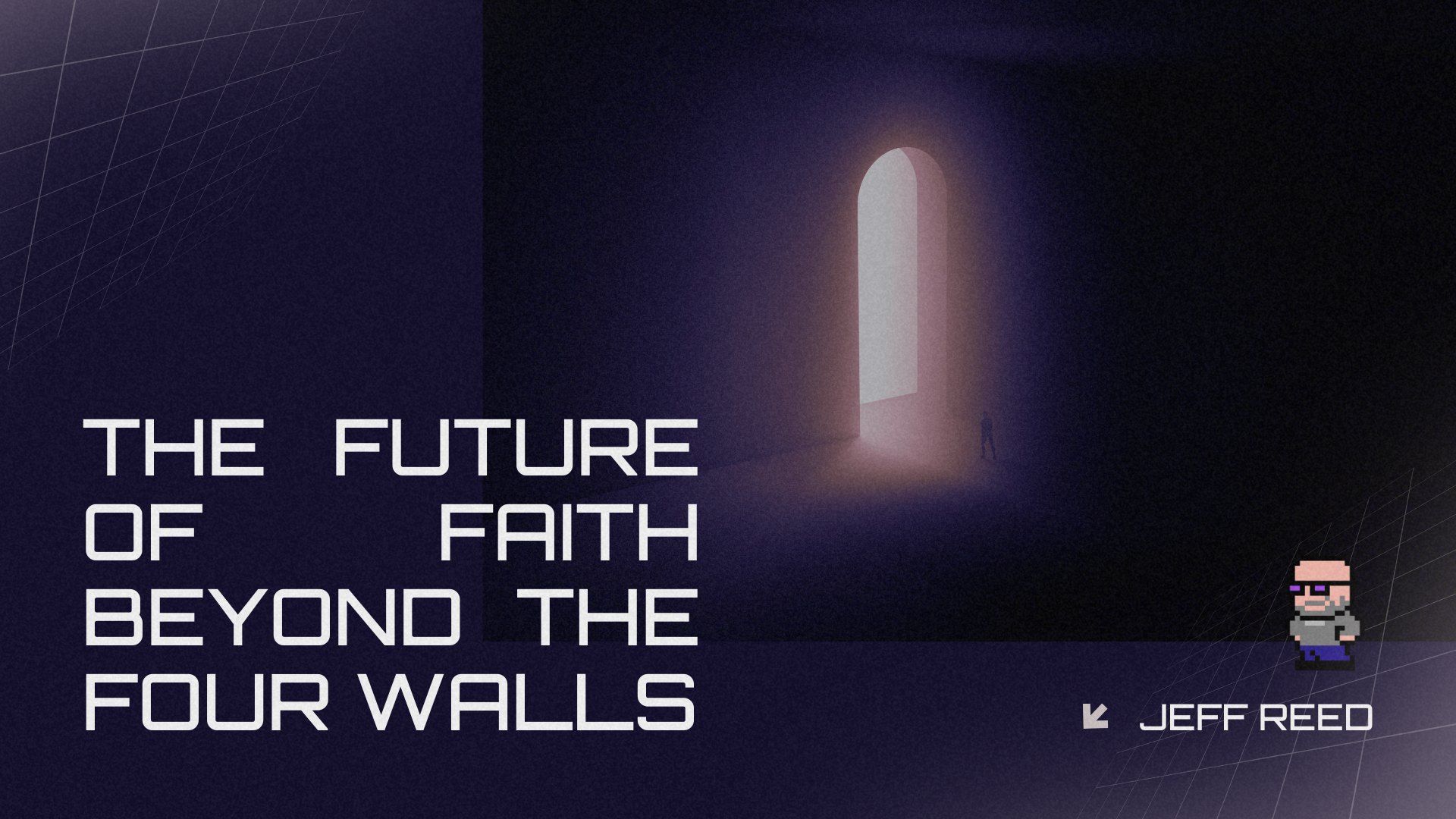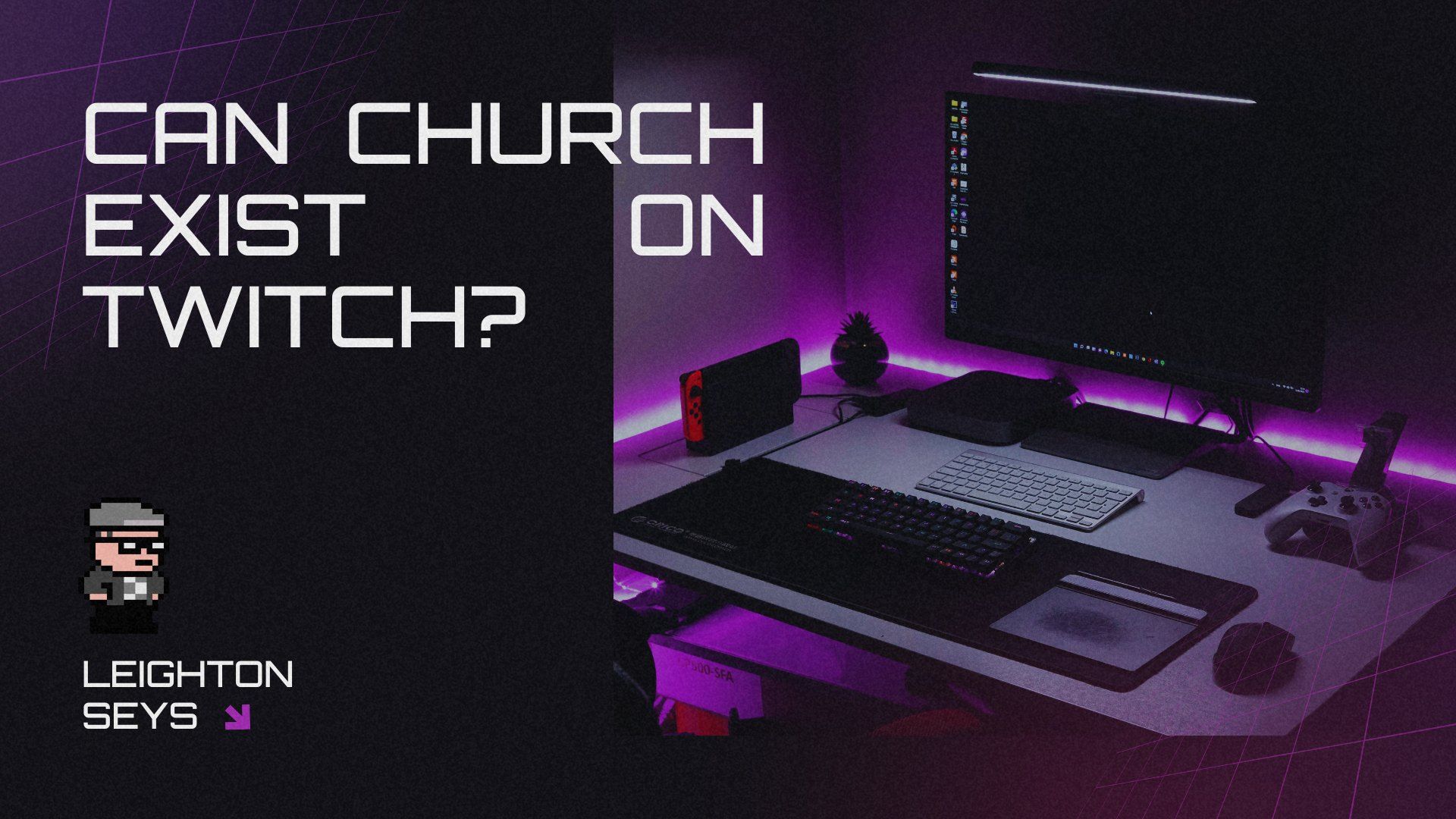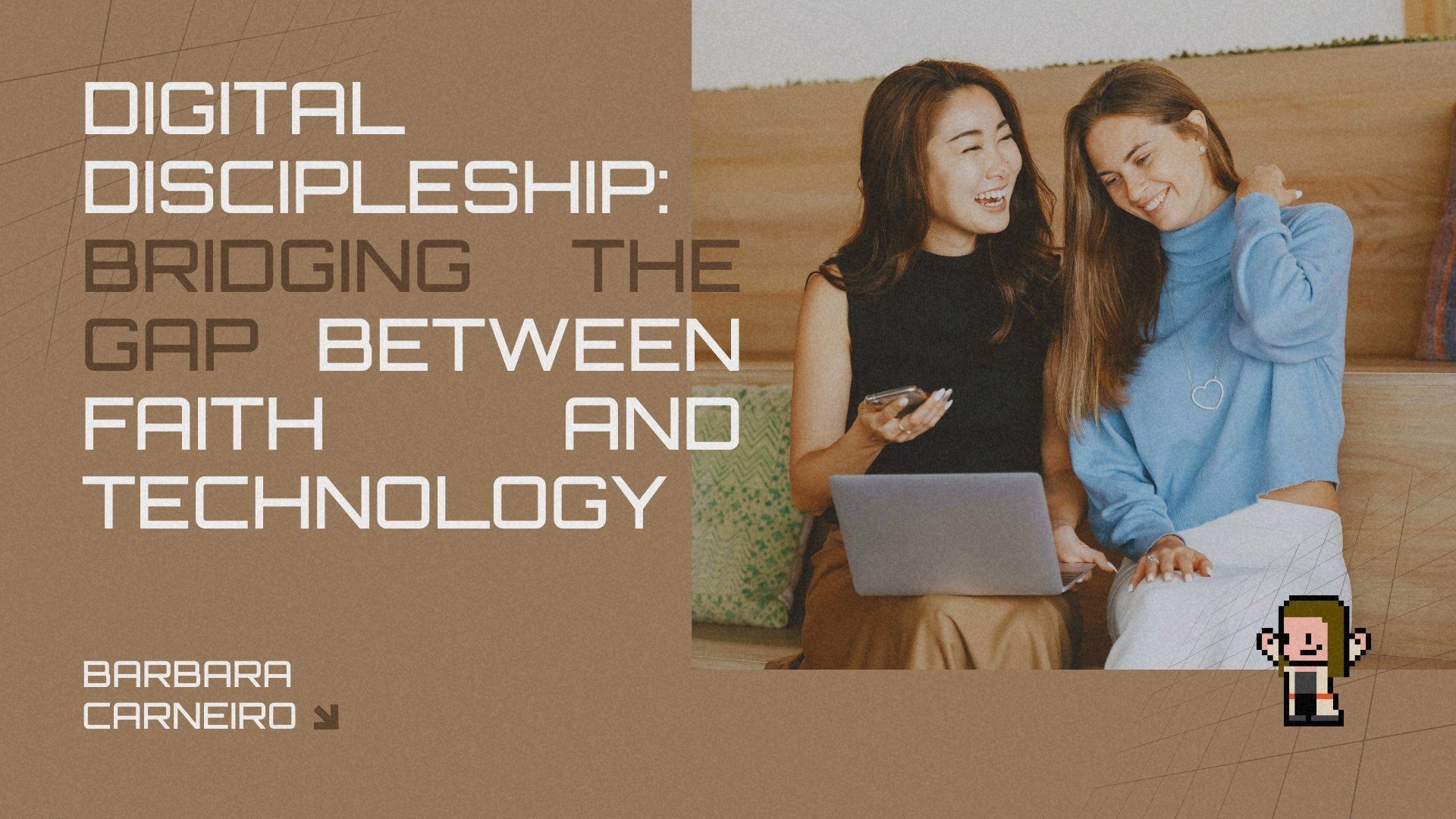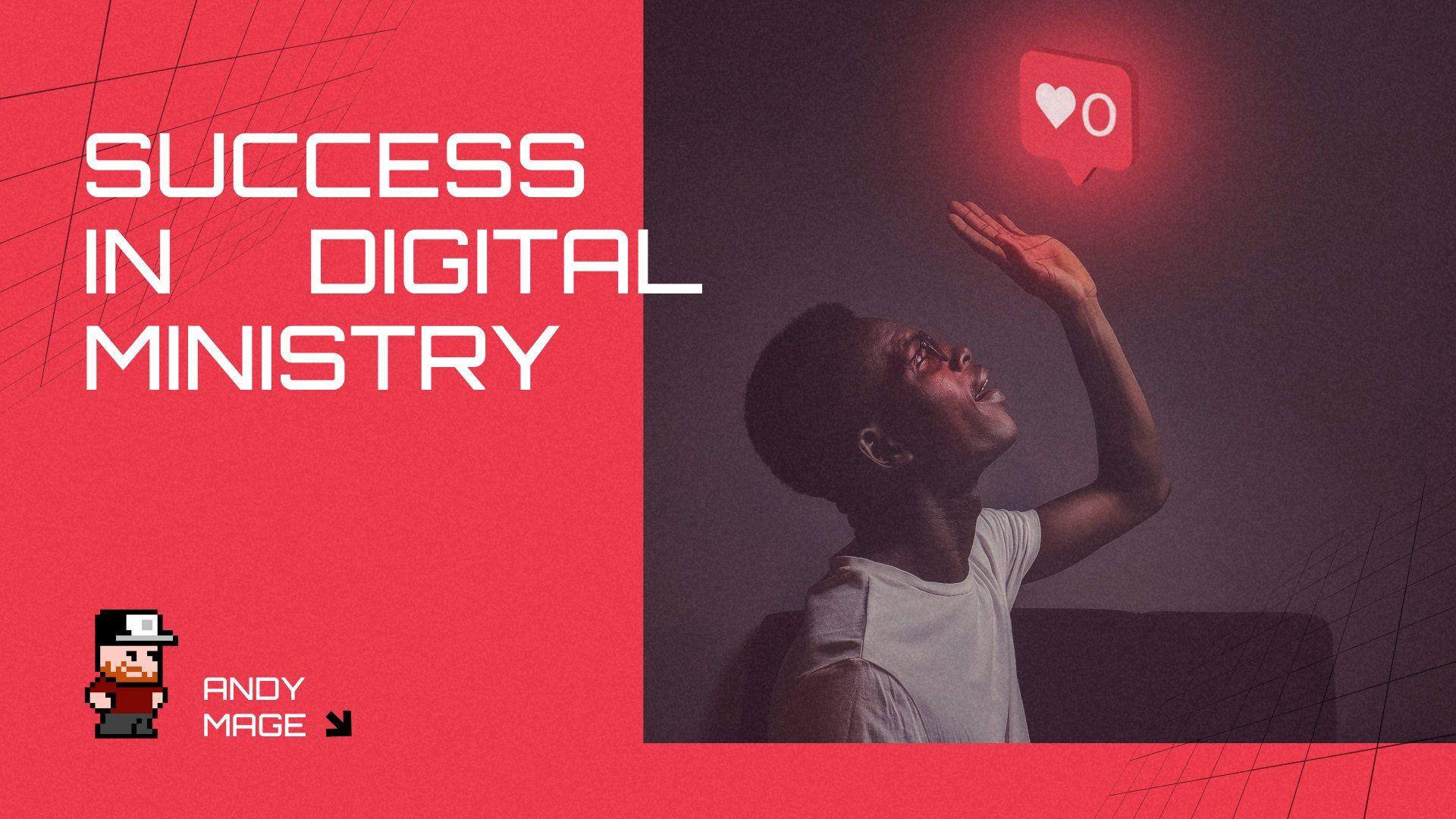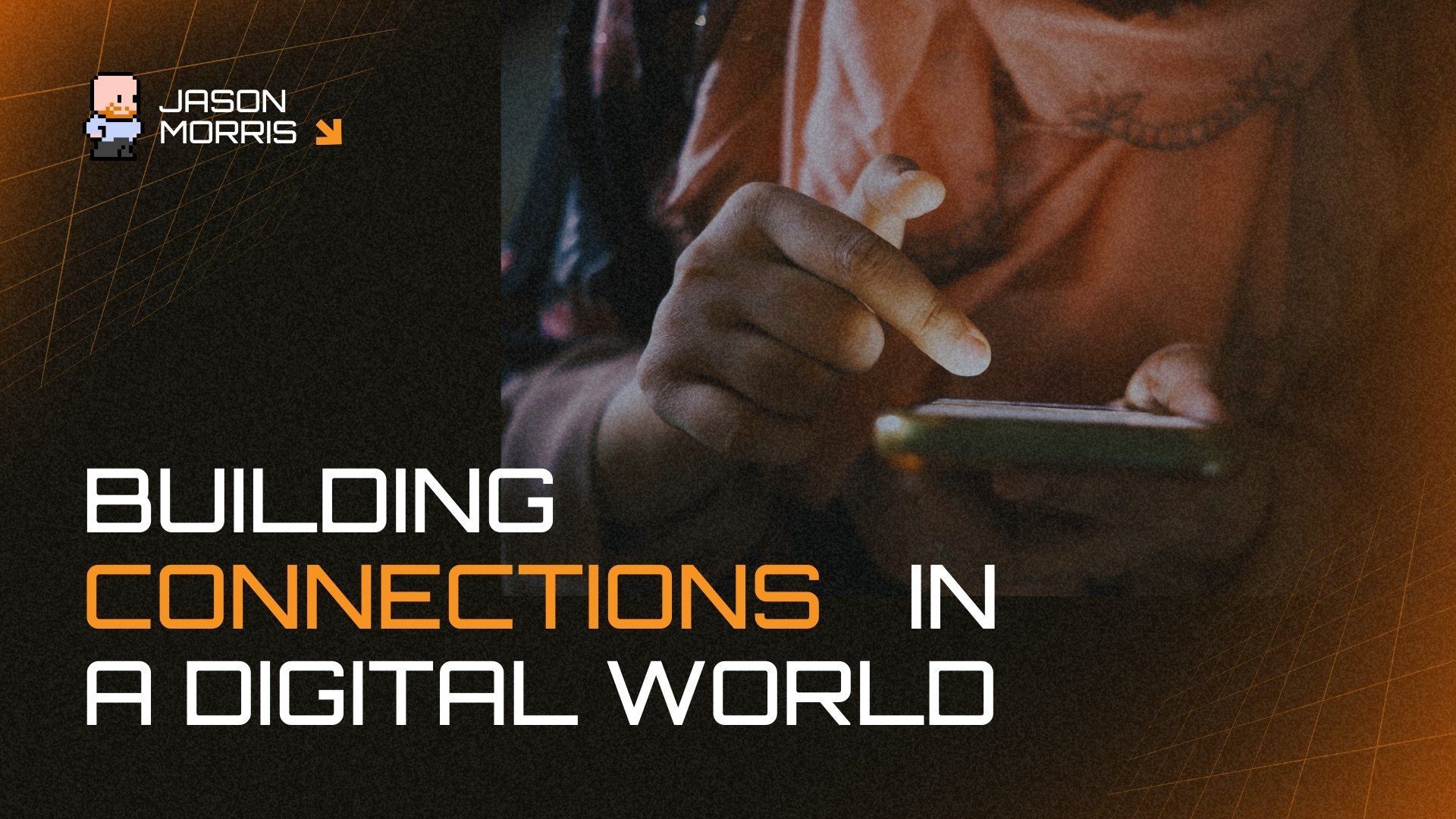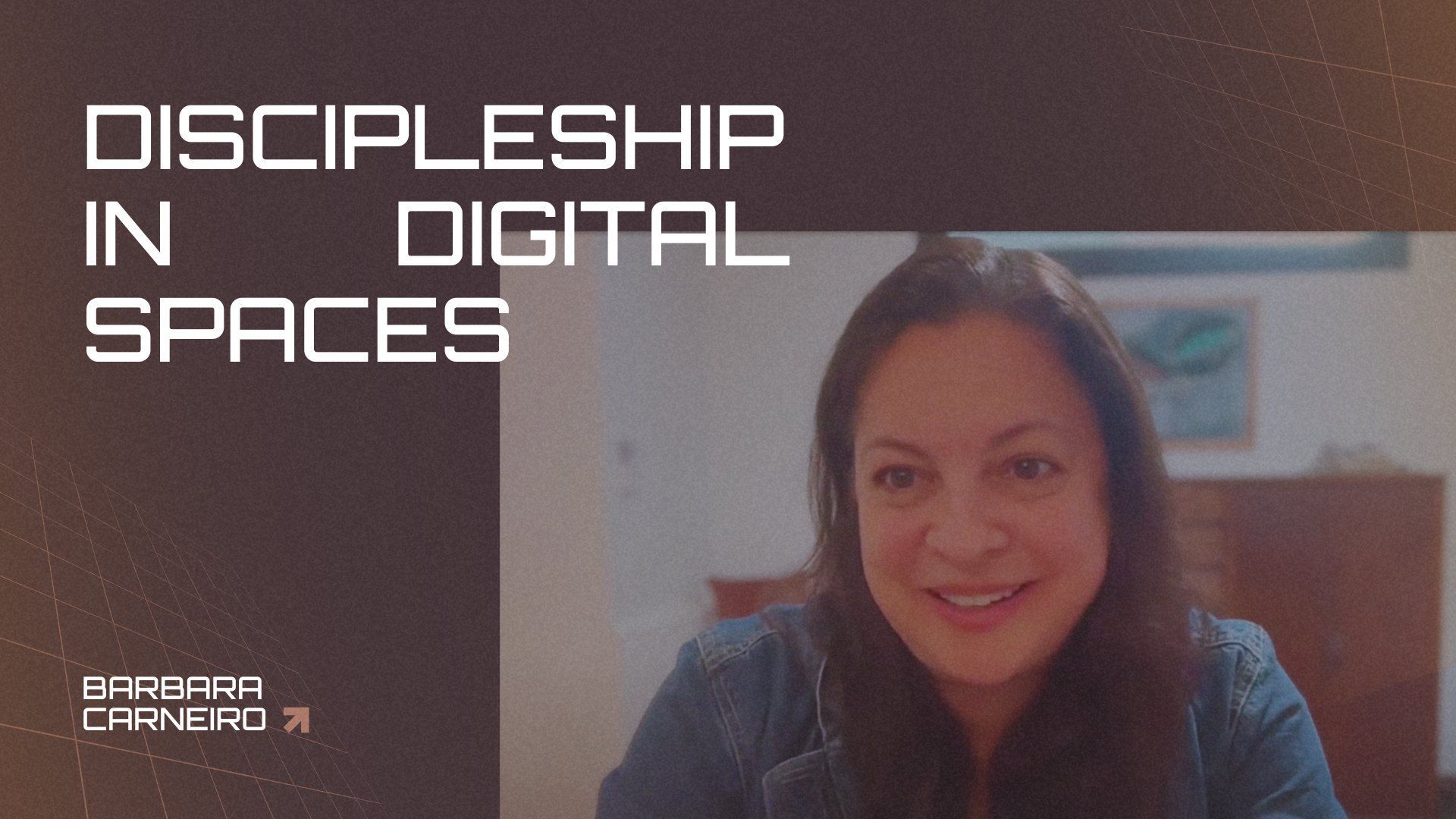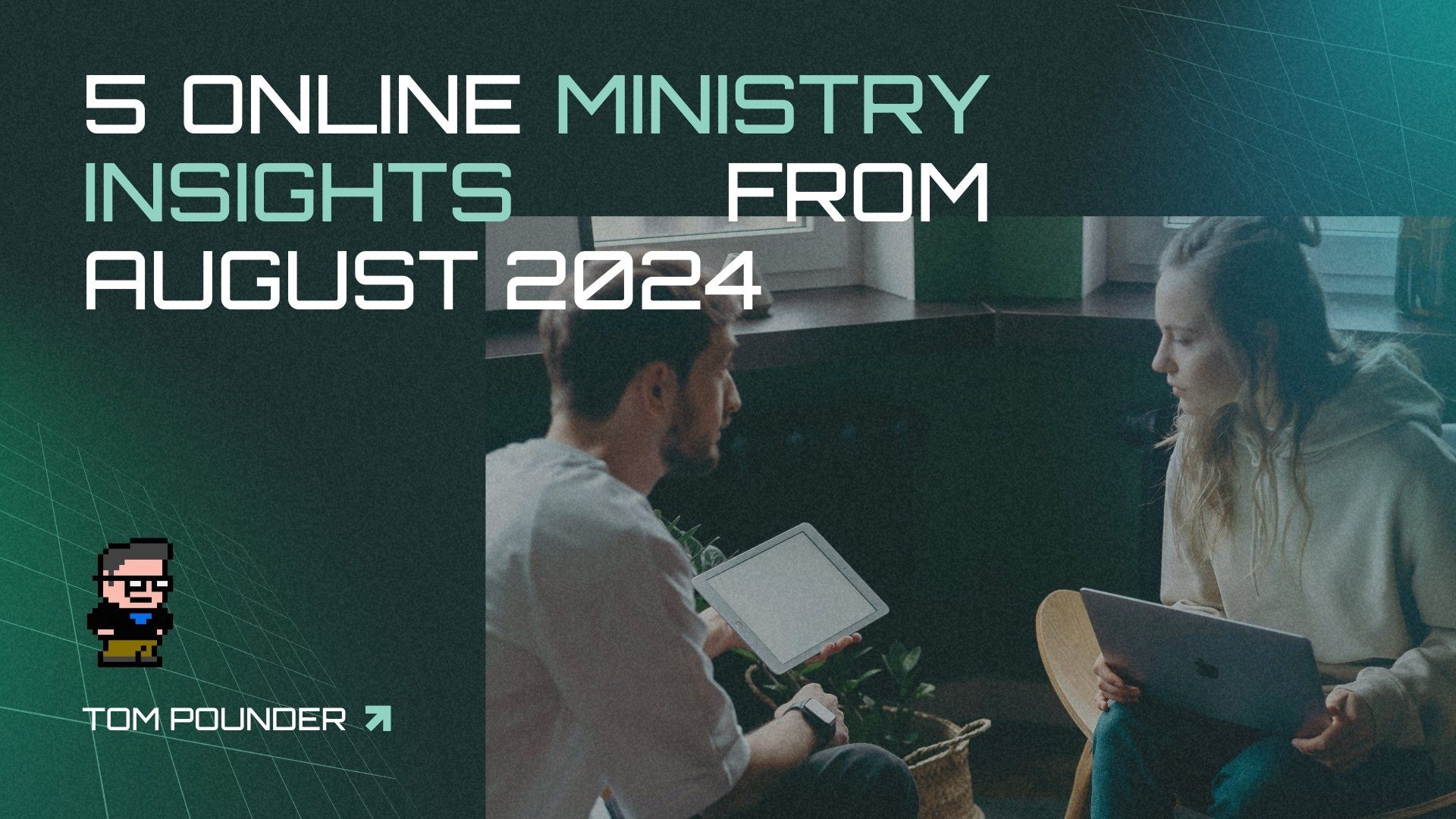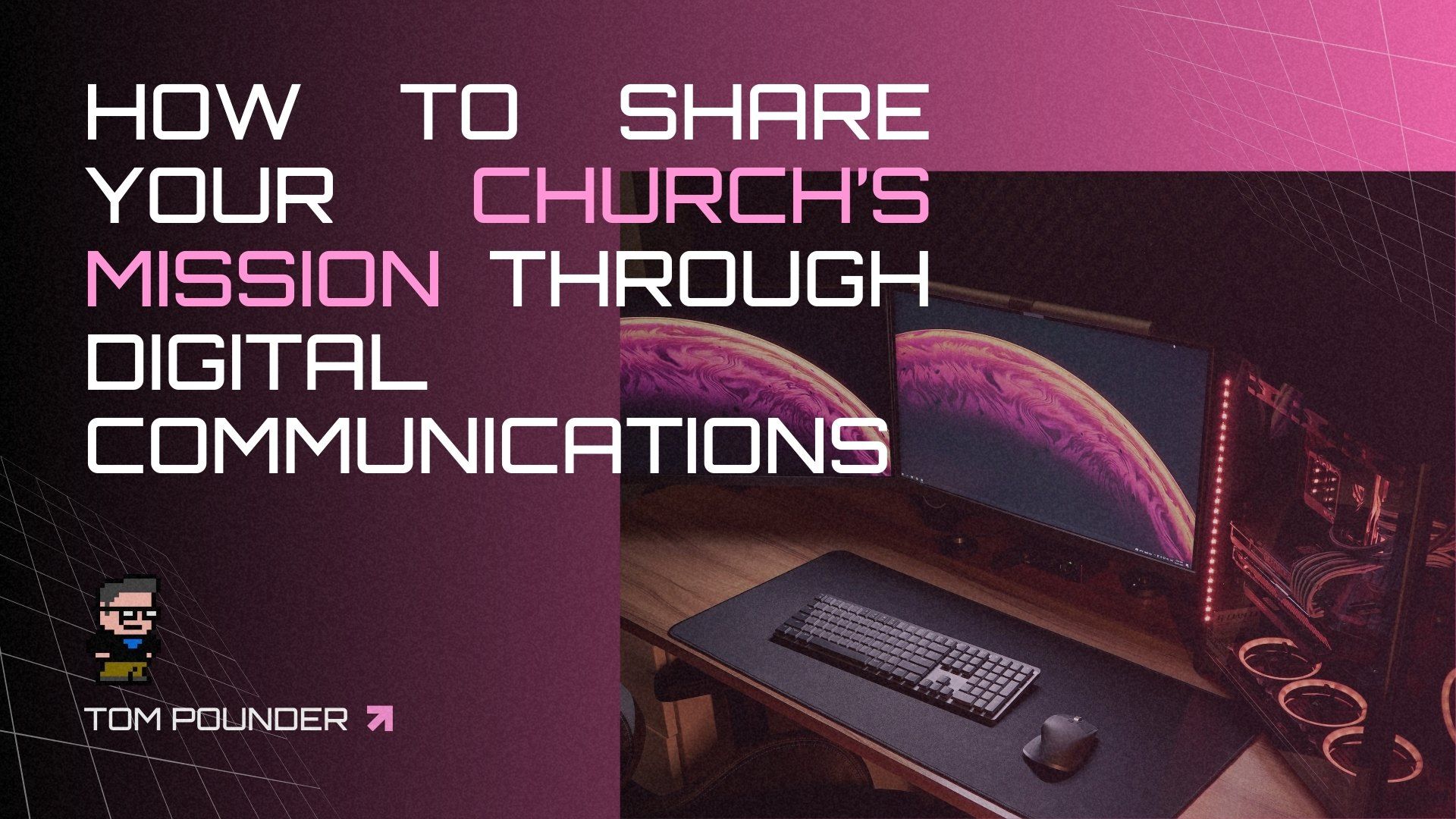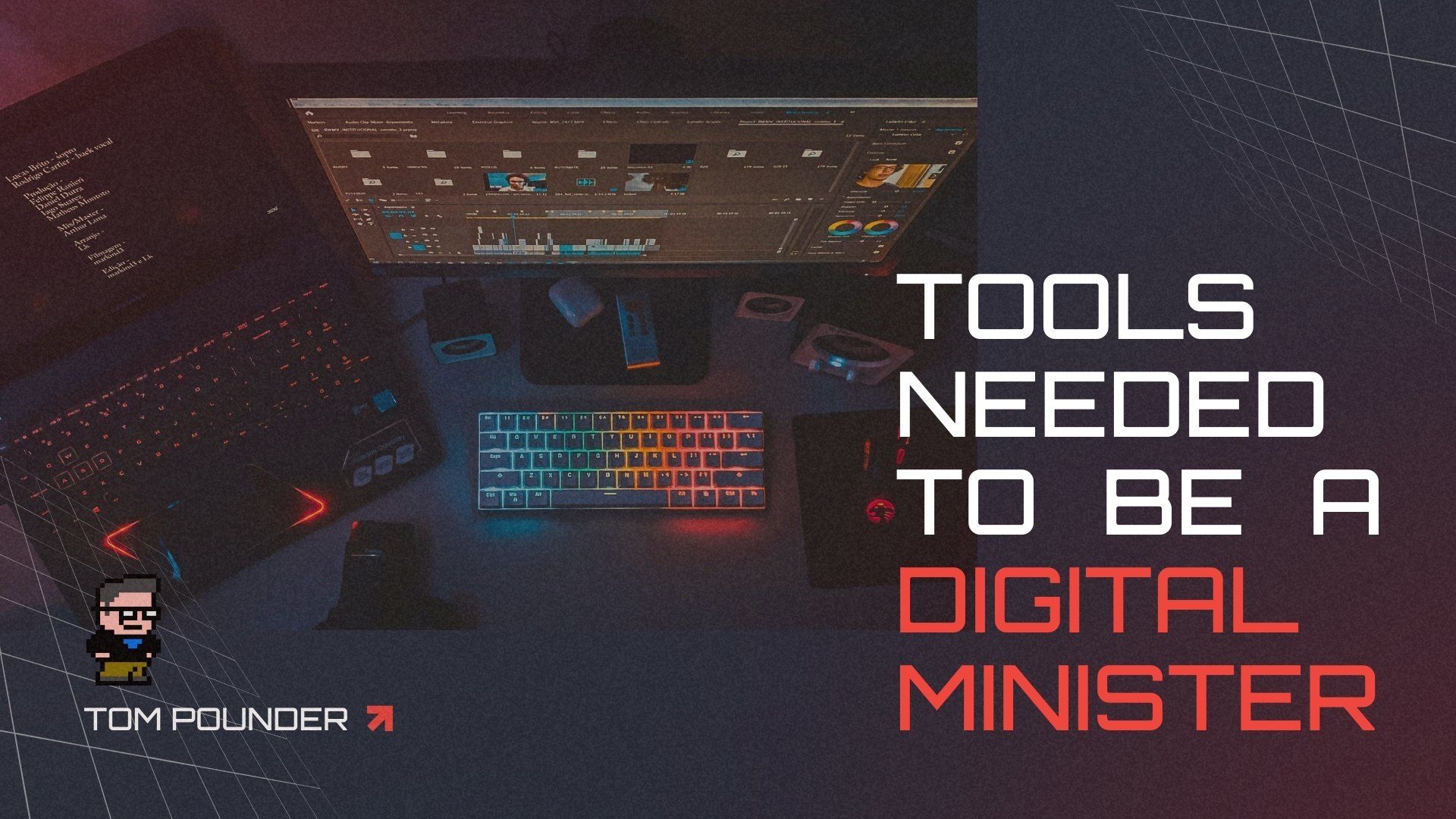PODCAST 037: Joe Radosevich & “Small Church” Church Online
Stat time, are you ready? Here we go. The average church in America has 73 people attending a week. 80% of churches in America today are under 200 in weekly attendance. These are shocking stats for me. As a guy who spends so much time working with multisite churches, megachurches, even gigachurches… I don’t think I had completely realized how small churches are in America.
Joe Radosevich understands this. As a Pastor of a Church Plant in Belgium, Wisconsin, he has a clear view of the reality of pastoring a small church. What makes Joe unique from many of his contemporaries is that Joe embraces technology in a big way to interact with his small church and engage his surrounding community.
What does a small church strategy look like for church online? Find out, here on The Church Digital Podcast.
If you're enjoying this episode, subscribe for free using your favorite podcast app below:
Apple Podcasts | RSS Feed | Anchor | Overcast | Spotify | Pocket Casts | Google Play
ON THE SHOW
Guest: Joe Radosevich
Belgium Community Church
Facebook
// Instagram
Guest: Tom Pounder
YM Sidekick
Twitter
// Facebook
Host: Jeff Reed
THECHURCH.DIGITAL
Twitter
//
Facebook
//
Instagram
//
LinkedIn
Co-Host: Rey DeArmas
Christ Fellowship Miami Online
Twitter
//
Facebook
//
Instagram
SHOW NOTES
HELP ANOTHER CHURCH. LEAVE A REVIEW.
TRANSCRIPT
Jeff Reed: 00:00 Episode 37 of The Church Digital Podcast. We're taking a different approach here as we're going to look at things on the small. Normally when we talk about small, we're talking about micro locations, small groups, things like that that are happening in church online, but honestly I was called out recently by our guest on Facebook. We're having a different view with church online. You see, historically I, Jeff, I've been working with a multisite churches that are mega church, even giga church level and so just transparently my view of church and even church online is more of this mega giga church level. It's a much larger church. Here's a fascinating stat that I've just discovered here recently. 80% of churches in America today are under 200 in attendance any given Sunday. While I've been focusing, and I'm transparent here, I admit this, while I've been focusing on the big church, come to find out that the majority of churches that are out there aren't big.
Jeff Reed: 00:58 The majority of the people that are attending aren't big. They're attending the small and there's this whole other level that we should be reaching at the small church and helping smaller churches are discovering how smaller churches are utilizing technology. How are they utilizing church online? Until this point I bring in our guests for today, Joe Radosevich, who is a pastor of a church plant in Belgium, Wisconsin. Belgium Community Church, is a small church plant, up there and Joe's got a big heart to reach the people in his neighborhoods. He's got a big heart to impact people with the gospel and create disciple makers who are capable of creating other disciples. And it was a pleasure to have this conversation with him today as we dove into this idea of small church, church online. So for this conversation, I'm bringing in Joe Radosevich obviously church planner and lead pastor there at Belgium community church. I'm bringing in Tom Pounder who of course anytime Tom comes into the show from a YM Sidekick podcast and digital bootcamp and all the things that he's doing. Man, it's always a pleasure just to hang out with him. I'm bringing in Rey DeArmas. Rey is a common guest host here at The Church Digital and of course Online Pastor at Christ Fellowship in Miami. And my course, myself, Jeff with The Church Digital to have this conversation on small church church online. Hey everybody, here you go.
Joe Radosevich: 02:27 This church has actually started 25 years ago. But long story short, after a period of health, it declined to so that they closed their doors. So they closed the doors strategically for a year and a half while looking for a pastor. The denomination chipped in money to renovate the building. And so basically it's more like a church plant that has a building. There's some history, but basically we have a new name. It's a new church. and, and it's in a community that really surrounded by communities without churches, without gospel, evangelical churches, even, even mainline and Catholic churches are closing up in this area. So there's half a million people within 25 miles of us, but they're made up in small towns and they're little towns where oftentimes there's no church at all or there's no church that's preaching the gospel. And so anyway, so we're kind of coming out of the church plant circle, looking at a town, looking at a series of communities and saying, how do we reach these people?
Joe Radosevich: 03:30 And quite honestly, the front door of our church is online, we know that we know everybody has a mobile device. they've got computers and TVs and smart stuff and all over the place. How do we use these things to get our front door as closely as we can or as close to people as we can get it. So that's kind of where we come at the church on my end livestream kind of conversation is I'm using it to disciple the people that we have and using it to reach people that are in our community and wouldn't be reached in any other way.
Jeff Reed: 03:59 Let me ask this question, Joe. How long have you been, cause you're relatively new at the church, Belgium Community?
Joe Radosevich: 04:06 So I moved up here June of 2017 so two and a half years. The church restarted a little over a year and a half ago. So the first six months was a Helter Skelter, renovate a building, gather a core team and launch a church. Yeah. So two and a half years. and I'm realizing that was a pretty breakneck peg for the first two and a half. So yeah.
Jeff Reed: 04:34 Did you move there for this specific church or at the God, just curious kind of backstory. So you moved up to Belgium, Wisconsin with visions of rebirthing kind of this, this existing church area?
Joe Radosevich: 04:46 If I had known it was a church plant, I would have run, I thought it was a church revitalization, that's what I thought it was a, and I had a failed church plant in Illinois. The Lord used it to really teach me and grow me, prepare me, for some things. But if I had known this was a church man, I would have run away. But I'm actually glad I didn't because I really found a lot of my gifts in the middle of all this. So anyway, so I, this was a position that I thought was a revitalization. And so we moved up here and said, okay, and I really wanted to go North because I wanted to go to a place where, and we're not just another flavor of church, which I realize that's even changing in the South. A lot of churches are closing super fast and people are not hearing the gospel, but I want him to go to a place where people go, I've never heard this before.
Joe Radosevich: 05:31 This is really good news. and really that's what I found here in Wisconsin. I'd never been to Wisconsin until I interviewed for this position. But, to hear people go, I've never heard this in my life, what are you talking about? And for the people in our church to get division for that and go, yeah, there are people in our lives that thought Jesus Christ was just a swear word. They didn't realize he was actually a person. And that the, we have a message and that there's good news. So for me that's super exciting. to be able to, being a player, I call it be a big fish in a small pond in the sense that it's not just, Hey, we've got a better, we've got a better worship band, a better preacher, a better something. It's we have something that you've never heard before and you need it. This is good news for you.
Jeff Reed: 06:15 I'm not, I'm not much on numbers. And if you listen to the podcasts, like we make fun of numbers on a regular basis, but I want to put a number on this to help define to the audience that the scope of, of who you are and kind of where you are in your ministry journey. Like what, what type of, what's your average attendance on a Sunday? Like what, what does this actually look like?
Joe Radosevich: 06:38 So we had 55 on Sunday. I think our current average is more like 60 but that was, that's probably our current average.
Jeff Reed: 06:47 What's interesting, and this is, this is a stat that, that I just discovered as somebody told this to me maybe a week ago, 80% of churches today are under 200, attenders on average. And for me, that is, that's an area that I just transparently, and I've said it before, like I wasn't as aware of the small church as probably I should have and working with Rey and, and some others like The Church Digital, we're going to start to turn the corner and work more towards not only a mega church, not only a multisite church, but, but also start to create some resources, towards the smaller church to, to help them. Because the majority of churches, by far, the majority of the churches are more like you, Joe, and the, you know, 200 and under range then, then the gigas and the megas that are out there.
Joe Radosevich: 07:40 Yeah. So several years ago, I read something by Seth Goden where he was saying, what's the best way? And I don't even know what his point was, but he said, what's the best way to, reduce car fuel consumption? And he said, is it to increase, like the, the miles per gallon that the top end cars to go so that the cars they go 50 miles per hour or I'm sorry, they go 50 miles per gallon and they'd get 65 or 75 or is it to take those trucks that get 17 and increase those by four? And he said, you can make a bigger difference on gas emissions by just increasing the low end a little bit, much more than the taking the, the cars they get 50 miles per gallon and increasing those, he was saying you can make a bigger difference on that low end.
Joe Radosevich: 08:31 And when we look at the church landscape and there's 300,000 churches in the United States, 1300 of them are over 2000. Let's say 10,000 of them are over a thousand people. Then if you just increase those 300,000 other churches by 10% 15% you would see a massive difference in Christian landscape across the country just by empowering those smaller churches to reach 10% more than they're doing or for some of them reaching anybody. But anyway. so anyway, I just think of that analogy that reaching like really equipping smaller churches, a church like ours, it will be a lot easier for us to double in size than it would be for one of you guys to double in size. Right? The kinds of things you guys talk about helped me a ton. And so we've got people that follow along and say, Hey, we've been following you guys online for months and we finally decided to come in the door and then we get the chance to disciple them and walk with them and equip them to begin reaching the people in their circles.
Rey DeArmas: 09:34 That's powerful, Joe. So what digital tools are you guys leveraging right now at a church your size?
Joe Radosevich: 09:43 There's a bunch. So this week we're really getting ready for Christmas. We're doing some community Christmas and being involved in other community events. For Christmas. We use our website, we use Facebook, we use Instagram, we use a live stream, we use digital invites, we use a mailing list that, of every guest that's come through our church. and then we really build a series package like a larger church would do and use that to invite everybody in our community. So we use Facebook ads. another, another example of what we're using right now is creating, for us, we have been good enough designers. We've got really high end designers who attend our church and that's their part of their day job is as a graphic designer. But for us, they basically see this as a ministry tool.
Joe Radosevich: 10:27 So they create motion graphics as both a sermon series bumper, but also as a Facebook invite for our community. Nobody does anything custom for anybody in our community. And so when we like reach out with our stories with, when we reach out with the same kind of tools that they would see online for any other kind of company, people in the community kind of sit up and go, Hey, this might be worth paying attention to. So they're kind of leveraging all of those tools to make sure that our live stream is a front door for people to connect with us. That we can do Facebook invites for people in our community. Some of the stuff that I kind of learned from you guys is that you guys have had discussions about front door, side door and only door only doors. Not really a part of our strategy just because we don't have the resources or really the need.
Joe Radosevich: 11:12 We would rather say, Hey, let's let larger churches like Christ Fellowship and elevation and life church. Let's let them reach the people that the only door they'll ever have is online. But can we use video of either all or part of our service so people can kind of can get a flavor of what it would be like to come to our church before comings and we're kind of, we're part of the discussion I started with you guys was to be figuring out what can we do better because this has been helpful to us, but what can we do to make it even better because it's been a front door for so many, whether it's guests, they kind of come in and then just kind of come in once every six months or people that are kind of lurking and of saying, is this place for real?
Joe Radosevich: 11:54 Is this a place that I want to go to? We also take those video and then we've turned them into video clips. The part of the eye. The idea for us is, since I work hard on my sermon anyway, can we use that the rest of the week to be a blessing and to be an encouragement, not just to go slap it up on YouTube in its full rank, but to go is there like 30 seconds or a minute and a half? That could be really encouraging for somebody that needs to hear, that needs to hear God's not done with them. And so we kind of go through and take all of the, you know, Adobe creative cloud to take motion graphics and to take video clips and to make graphic and podcasts and do all of those things. And so all of those things help us try to disciple during the week and connect people to our church so that they can grow as disciples and then be a part of the mission of reaching this community.
Joe Radosevich: 12:48 Because really what we're after is can we reach and disciple people to reach the other people that will never come to our doors, not just as to, Hey, let's add 15 people. Let's add 20 people and to be 120 or 200 people. But can we, our vision really is every block, every community, every people. Can we get to the point where we have a family in our church discipled and engaged in the mission of everybody else on their block. We can't fit all of them in our building. So how do we use digital tools and the in person, you know, relationships that we have to equip them to reach everybody else. So that's good.
Rey DeArmas: 13:22 How are you now? How are you managing some of those tools? Like the live stream and the podcast? Is that volunteer-driven or are you the person behind the scenes making a lot of that happen?
Joe Radosevich: 13:30 How's that working for you guys? It's all in. It's mostly volunteer driven. I spend some of my week on some of those things cause I'm like, Hey, if I'm gonna spend that much time preparing a sermon, I might as well make sure it's in a good form for a video clip or a podcast. So some of that I've learned to myself, but it's mostly volunteer driven. So, like I said, we've got some really, really capable volunteers who are like, wait, God can use my gifts for the kingdom. Let's do it. And so they just, they take things far beyond what I could ever imagine.
Rey DeArmas: 14:00 That's awesome. And then, you know, not that works kind of plus or particular tool, but what kind of tools are you guys using for that so that other churches can learn on what kind of live stream tools are you using? What are you guys using for podcasting, etc.?
Joe Radosevich: 14:11 So it's funny because this week I found out there is a church 15 miles away that's spending $100,000 upgrading their cameras. And we had, we spent less than a thousand dollars, but our volunteers are good enough that our quality is higher than a hundred thousand dollar camera system. It's good stuff but the big thing, so we use a, I don't even know the name of it, it's a small Canon HD camera that we said, Hey, this is going to probably work. It's going to give us enough of a zoom to work. But most of it is really built around Adobe creative cloud, which because of the nonprofit discount, I'm like, it's absolutely worth it too because it just so much easier and the volunteers can do it. but we've also used things like audacity, the free a music editing tool for podcasts. That's super helpful because what I find is in this community where people largely have a family religious background, even if they don't practice, they would never come in the door of our church as a first step because that would be to reject their family.
Joe Radosevich: 15:13 And so they will actually download our podcast every week and listen, but, and, but they haven't taken that step. Ultimately to follow Jesus, they're going to have to reject their family, to follow him. But at this point I'm like, okay, a well edited sermon podcasts, which this may be something helpful to small churches is we do them in series, but then we package them in series both with our graphics with an intro and an outro for every sermon so that it feels like I could binge listened to this series from, we call it Adorn, you know, like lives that make the gospel attractive. It was a look at the book of Titus, but it's like, Oh, I haven't listened to five sermons in this series or Failure's Not Final. I could listen to four sermons from that series and you get a music intro.
Joe Radosevich: 16:00 A couple of other tools that we use that I love is Sound Stripe. It's a music subscription. I think it costs about $130 per year, but you then have a license to use custom music in video projects, podcasts and things like that. And that really ups the level of our production for, like I said, invites, Facebook ads, video sermon bumpers, our live stream. We're trying something new. I was meeting with my volunteer after talking with you guys to say, Hey, what could we do that would improve our livestream? And we would say, you know what, an introduction from somebody in our church just doing a video to say, Hey, we're so glad you're here. This is a series that we're in right now, run the sermon bumper that we've already made. And then goes into the service and then leave. That helps kind of give somebody a connection point of, Oh, there's some intention to this. And at the end they asked me to reach out and give their contact info.
Tom Pounder: 16:56 I love what you're, you're doing here, Joe, in the sense of you're making it very personable. And again, I think there's a lot of churches, my church included, we all share our sermons online on, on podcast. We use actually sermon.net. I'm not the brains behind that, but I'll just share that and if anybody wants to know that, but we just share a sermons, the fact that you're doing an intro and an exit to that really makes it personable and someone can really kind of maybe identify with that a little bit more. Same thing with your live stream. You know, having someone welcome everyone in greet everyone. We live stream our church services. But you know, unless I'm, you know, because I do a lot of the mid service stuff in the end announcements unless I'm directly talking to the people online from stage, which is kind of weird because we've got people in our campus right there. But you know, we're, I'm talking to the people are in the state, in the auditorium and also the people online. But I like how you're making it very personable and I think that that draws a connection. So then maybe when they do come in through the front door, they can maybe see that person and say, Oh yeah, I saw you online.
Joe Radosevich: 18:07 And they do say that. And so that's kind of my hope or having other people in the church get featured. But they will say, Oh, we know you cause we've seen then your website and we've watched the videos like we know you Joe, even though you know, I'd never met them before. And so we actually got the idea for the intro and outro and stuff from the stuff that I saw you do, Tom, is I was like, there's more in their live stream and that's super helpful. So how can we make our live stream not just a video of our service, Hey, just watch a video of the service, but instead, Hey, please connect with us. Like let's make this personal. Let's make this intentional. The other thing that we, it may be helpful to other small churches and, is to begin to think through all of this stuff that you guys talk about. So you guys interviewed leaders who talk about pop-up churches and some other things to begin to think through all of those things through the lens of how am I actually blessing and equipping people right where they're at right now. So that instead of it in the church world, we can easily be, Hey, look at me. Come here, come and do this. We try. I've tried to tell our people regularly, like let's maybe once per week invite somebody to something. Let's instead try to figure out how do we bless them and encourage them right where they're at right now. Let's let the live stream be a current blessing. Not the livestream as an invitation to some kind of youth event or some kind of other event. Use every digital tool to say, you can actually hear about Jesus today. You don't have to wait to hear about Jesus on Sunday. Your marriage can be benefited today, not later down the road.
Rey DeArmas: 19:43 So are you purposefully driving toward the next step for the folks watching the livestream as well, encouraging not just the people in the room, but the people on the livestream and saying, Hey, this next step is for you to like, are you directing that as at them as well?
Joe Radosevich: 19:55 That's what we talked about this week where we said, Hey, how do we, they're already connecting and watching the live stream. We've got faces. We're trying, we've got fairly good production quality at this point. How do we use that to not just drop the ball and say, well hopefully, hopefully we see you again next week, but to say, Hey, can you connect with us? Can you give us your contact and post so we can reach out? If we can pray for you, can you let us know? The answer is we're trying to head in that direction. One
Rey DeArmas: 20:24 of the things that we've done at CF, and Jeff was part of this too, is we've created a standardized URL that leads to a form that's basically our online connection card that we leverage both in our on demand services and also, at the end of every live stream, we're, Hey, if you want to connect with us, go to cfmiami.org/online or slash connect. For us it's been online and it drives towards that card. I even got it as a pop up. As soon as I hit that site, boom, it's in their face. And it gives them the same options that they have with a physical card in our context as well, just to drive towards that next step of, Hey, we want to connect with you. Or in some cases, Hey, you know, if you want to, you know, if you, if you prayed a prayer to receive Christ, you know, when you want to take that next step in baptism, we want to connect with you. All that stuff is there so that it gives them an option to connect with us. And then from there we've got to do the followup. We've got to do the real time pastoring of exactly like what you guys do when you receive data, when data comes into your context, live at church, that it drives towards that next step of helping them get connected and that's worked out well for us.
Joe Radosevich: 21:28 That makes sense. And that's an easy thing to do. So anybody who's listening to this and isn't a small church, I recommend Squarespace for a number of reasons, but one of which is the thing that Rey just talked about is something that you can easily do. We do that for Easter series. We do that for any big series that we do. We can make a landing page that gives contact ability like that. And so the I that idea Rey just had is easy to work on, especially great a small church. Squarespace means you can do that as many times as you want.
Rey DeArmas: 21:57 Yeah, exactly. And I think having one standardized URL that you're leveraging the entire time. This way, you know, no matter what series you're in, the URL stays the same. So you know, in our context for cfmiami.org/online, it's just been not communicated over and over and over again. And it's been like a driver so that no matter what episode they're listening to as they're bingeing, it's the same thing over and over again in their ear. Ah, I've got to connect, I've got to connect, I've got to connect. And I know where to go to. It's a good thing to have.
Joe Radosevich: 22:26 Cool. That's a good tip.
Jeff Reed: 22:27 What is the url with you guys? Is it cfmiami.org/connect?
Rey DeArmas: 22:32 It's slash online we used to do slash connect and actually slash connect actually drives back to online because I was like, all right, so for all of our former episodes I've got to make sure that we've got that. We've got it all, all working together and it works great and it's, it's actually helped increase the amount of engagement that we get online. Like we get more small groups on us, we're getting more, we're getting more engagement in terms of people wanting to connect more. And then for us we're even taking further next steps of treating them like a first time guest like we would live. And so in a lot of cases I'm even sending them, you know, like our first time guests gifts if possible. You know like if they, if they give us a data, if they engage with us. Also in our context, we do a mug for like our first time guests get, but we've also leveraged con, free content, like a song download from our worship team, you know, or maybe Joe, if you've got something that, Hey, here's like an extra bonus sermon from me that you want, that you can't get anywhere else.
Rey DeArmas: 23:31 That's stuff that we've been toying around with for, to give extra added incentive. And that idea, that idea kind of sparked from, you know, kind of the old days when we would listen to, you know, people on the radio messages on the radio and say, Hey, if you connect with us, we'll send you a book. I was like, they might not want a book, but they might want extra bonus content for free. And that's stuff that we got. Let's just leverage it.
Joe Radosevich: 23:52 Yeah, that's a really good idea. I've, I've toyed with that kind of an idea just surrounding, surrounding our community, being the hub for our community, like things to do or something. But that would actually be pretty easy, to figure out. Cause you know, in churches we come up with material all the time for all sorts of different purposes. And it would be easy to package a PDF of something.
Rey DeArmas: 24:19 Absolutely. Yeah. If you could give them like a quick download like, Hey, here's my ebook.
Jeff Reed: 24:24 I love that. We've toyed with that. I think we actually did some of that back back in the day with, I mean, and there's so, it's so easier to do this now where, but we had, back in the day we had a, like a, I want to say she was a 90 year old lady who would literally type out the message, the manuscript messages of it. would you remember her name? Rey? What was her name? She, she, we were, we lived in Miami literally was this 90 year old lady who lived in a, I want to say Oklahoma city. And she would watch the messages online. She would like record it on a cassette player. And she had one of those like transcriber machines where she'd type it and then like use the foot pedals to pause the audio tape. And literally just type this thing out. And we started giving it away as books, like at the, at the front desk and then ended up turning it into like PDFs that we would give away as well. And that was, that was well received for a season. You can go to temi.com and it's, it's what I use to manuscript out my, my podcasts. It's essentially like, 10 cents a minute to get it typed out. So if you're preaching a 20 minute message, it's two bucks.
Jeff Reed: 25:41 Mmm. Yes. Huge win. And it's like 85, 90% accurate. The majority of it's, you know, I pay somebody like $15 to go in and clean it up, but it's, it's very good. Temi.com and so, but you, once you get that text and you can turn it into PDFs and eBooks and whatever you want to put her on a, on a webpage. The reason I put it on all my blogs is SEO value is huge. And so a lot of these, these blogs that I've done, people are searching for and it generates a lot of traffic to the website. Basically because I did a podcast on it and I use the word a bunch and then I turned that into a manuscript that Google could pick up.
Joe Radosevich: 26:27 So that would actually be super helpful. To that, to making your series like bingeable because if you had on your sermon page a, you had both the audio video and the transcription and maybe some study guide questions that could be super useful to people down the road because then they had every kind of format that they want for that. You can use it. Somebody could use it as a small group curriculum. that would be super helpful to put it in a place like on your podcast or on your sermon page instead of just having audio. You could put all of those things, make it bingeable.
Jeff Reed: 27:06 For me, one of the things that, that I kind of look at when I look at some of these online small churches that are, that are doing this honestly and in Joe, like I, I've not seen your stuff, so I don't want to be like labeling here, but it's, it's low quality video and I'm a video guy and there's, there's a high level of forgiveness on video. But a lot of times smaller churches struggle to, to pull something off live that honestly, I don't know, that has to be live. Like there's ways that you can SIM live it or there's ways that you can, can fake the likeness or prerecord something in an easier format that doesn't necessarily have the audience it like, or the, the wide shot that, that, that's further away. like, so if you're not, like, if you're not wanting to do worship in the broadcast, you know, one of the things that I, that I've talked with, with pastors in the past on Joe and I'm just curious, how long is your message?
Joe Radosevich: 28:08 Between 20 and 28 minutes.
Jeff Reed: 28:10 Well, that's actually on the short side. I honestly, I'm just going to be transparent. I don't know that I've met a pastor who's preaching a 20 minute message, so well done. The majority of pastors, I, yeah, the majority of pastors I talk to are, you know, in that 40 range, my, the church that I, that I attend Christ Journey, Bill preaches about 30 to 35, but previously it was 40 to 50. And so, you know, I would encourage a lot of times to preach a shorter message online. You know, maybe it was like the opening and the 0.1 and 0.3 into closing. You cut out 0.2 or sometimes some of the longer stories or illustrations that can kind of get cut to, to make it more, easier to digest for an online audience, especially if you're trying to reach that front door person, that visitor, that person's probably in.
Jeff Reed: 29:03 If you're a longer sermon, that's the person's probably not going to hang around for a 40 minute broadcast. But if you could preach a smaller sermon on a Thursday, on a Friday, on a Saturday, just even considered it a rough draft, a trial run on the message, preach it, and then you can book in end creative video for like front door people around it. maybe it's a two minute welcome that shows you know, that the campus, your church and how to check in kids or you know, something else that that's more designed to help people get connected to your church from that front door status. You can record all this stuff before the Sunday morning service and even in an, a much more creative welcoming environment than like the worship center would be. The camera could be much closer to get your detail of it.
Jeff Reed: 30:00 And then render that video down. There are services like, restream.io, that is where you can upload the, to the cloud and you can use restream to actually schedule the playback of these, of that video file. Christ fellowship Rey uses it every week. I want to say you've been one year, two years. I think I did that before I left. So yeah, you've been on restream for two years where essentially, yeah, they are, they upload and I'm going to let the cat out of the bag, sorry. Right. But they upload their Saturday night service and and they, and they edit in announcements and things like that and then upload it to restream. And that plays back Sunday morning, like at the time they specify. And so it, it feels live, it looks live, but it's got content outside of what happens in the service. And so your content, you can even spend some of your message to really aim more towards those front door people without having to sacrifice what happens in the worship center. Does that kind of makes sense? You ever thought about something like that, Joe?
Joe Radosevich: 31:12 Yeah. So when we started having that conversation last week and just began brainstorming, man, what are all the different models that you could do? Cause different churches have different needs. Yeah. Some of them have that too big of a wide shot. or the pastor is preaching specifically just in people in the room and that, so that makes total sense to kind of break the mold and say, Hey, what are the different things that we do best? And it could communicate best to other people.
Jeff Reed: 31:42 if, if you're cutting like just straight up, if you're cutting worship out of the mix, using a restream in my opinion is a lot cheaper than doing something like a, a, a wire cast where you're going to start to, to time slip that message around. other SIM live elements like a prerecorded, you know, welcome to visitors and guests. That's different than the live. Like live is easy to do when you've got a solid block of content that is live. But if you're trying to mix live with prerecorded, it just gets, especially on a small church, because I'm assuming, you know, most small churches, they want to keep it or they should keep it simple because things tend to like roll on top of it and all of a sudden you're over budget for what you're trying to do. You know, try to either keep it all live or keep everything prerecorded and then figure out a way to, you know, prerecord some sort of a simple message.
Jeff Reed: 32:46 But it was fun. Like there was, there was, one of my clients was a small church. I say it may be maybe 250, maybe 200 people. It's probably the average church in America. Honestly, it was a church plant, five-year-old. They met in a, basically like a, a theater, a lecture hall. And so it, the camera was an in the back of the auditorium and that was maybe a hundred, 150 foot like, shoot. And so we had to get a very big lens to get close to it. They ended up spending a lot of money and for this, but it was still, it was like, it was a head to toe shot. and actually they had a screen above them that they wanted to work in. So, you know, the actual teacher was very small on this lockdown shot. And, and the teacher was, was walking around the stage and we'd look at their Facebook stats and they'd get 150, maybe 250 views, and it, and it just, it wasn't, it wasn't great, but it was, was okay.
Jeff Reed: 33:48 They thought it was, they thought it was as good as it was going to get. There was a, there was a month where the camera broke and instead of using that wide shot, the, the university actually had like pan tilt, zoom cameras built in and so they paid a little extra to utilize those cameras. Well the cameras were further up and they had a much tighter face. and the, the engagement on those videos were like five fold. It went from 150 to two 50 to like seven 50 to 1200 and same, same, same preacher. So it's not this, it's not like it's paid advertising that that drove it up. They, they treated the videos the same way. Everything was related to how the video looked in the frame. And I know a lot of times, you know, you're trying to try and have a camera in the back trying to be unobtrusive. and that being further away doesn't give people the emotional connection to, to the face, to the detail, to the person speaking and that if you can get that much closer, I, and I've seen it, you're going to get a much better product out of it and people are going to engage at a much higher rate.
Joe Radosevich: 35:02 Absolutely. That's good. I actually think it would be worth it for you. I don't have in some form written or video or something to explain some of those video practices for pastors or in churches and small context. So our, our main volunteer was, you know, doing a bunch of research to figure out, Hey, what's the best way to film? How do we, you know, what's the angles that we want to be at? How do we even want to control the camera for the best effect? Because you can have a really nice camera, but if you control it poorly, then you just don't get your money's worth. So that would be totally worth a discussion, or some kind of a tutorial because yeah, being up close just makes a big difference. I get tired of seeing my own face on our churches stuff, but people want to see a face. Yeah, absolutely. And so we just keep doing it. Trying to include other places as possible as well. But people want to see a face and if it's super far back then they can't visualize themselves going to that church. They don't have any clue who the pastor is, what it looks like.
Jeff Reed: 36:09 And that would be the luxury of pre-recording this because that camera can get much closer and have to worry about audience in the room. Audio gets much clearer because you're probably just utilizing a microphone that's on me straight to the computer pack. Instead of going through front of house instead of a bunch of other RF that could conflict. And if there is issues, I can just stop and start back over instead of kind of struggling with any issues that pop up in the live venue. I pitched this to a pastor once and, and he's like, well, it feels inauthentic. And I'm like, Oh really? Like the average person's going to really pick up on that. I know sometimes it's difficult to preach to a lens. I've been down that road or not. I know that pain point, but I think you get a much richer quality kind of running out of this. So anyway. Rey, what do you got?
Rey DeArmas: 36:59 Well, I was going to say, Joe, do you interact with the camera at all as you're talking to your online audience?
Joe Radosevich: 37:05 No, not right now. Not at all.
Rey DeArmas: 37:07 Man, that's something that I would encourage big time addressing the people looking straight into the camera and addressing them as well because it lets them know and believe me, for those of us who are watching on the back end of the screen, it feels like you're staring us right in the eyes and that you're talking right to us. And so like Jeff said, moving the camera up will help. But then as soon as that camera is moved up and you're addressing the camera directly and now it feels like you're talking to me almost like we're having a cup of coffee. And so that changes the engagement way up in terms of, Ah, Joe is talking directly to me and this message is for me. I'm telling you that, that that'll be a game changer in terms of your online preaching, it'll be huge.
Jeff Reed: 37:51 What I normally advise, if you do keep the camera in the, when the worship center, I know a lot of teachers, they'll pick up five or six spots or people in the room and they just dance back and forth. Lead communicators will dance back and forth between those five or six just looking because that's their preprogrammed spots. Make one of, make one of the spots just stop on the camera. And so even if you're, even if you get 10% eye contact where you're drilling in on that camera, that's a huge win to that audience cause they're feeling like you're connecting with them live. and if you're doing the prerecorded stuff, man, just drill into the camera. There's even teleprompters that, that you can get setups and iPads and, and software that then teleprompt plus is one that we've used in the past. I'm not sure what Christ fellowship using these days, but basically like it's the teleprompter just smack in front of the lens. And, um, I'm literally reading from the teleprompter at the same time that I'm looking at the lens and people can't even realize that, you know, faking this. Like it's so, and it's so easy today compared to, you know, 10, 20 years ago when you had to pay all this equipment. And it's really, it's, it's a, it's an iPad. It's an iPhone. It's stuff that you already have.
Rey DeArmas: 39:07 Right. The other thing that it does, Joe, is that it definitely adds credibility to the people who are listening in the room to encourage other people to watch online. That's kind of like the weird spinoff that it does, is it helps create a relationship between that online and offline audience. folks who are engaging because people were in the room are like, Oh, wait a minute, Joe talking to them too. That's serious. Maybe I do need to share this with somebody else. And then for, and then for those who are watching online, they're like, Oh, he, he does see and care about me. He does know that I'm listening and watching it.
Jeff Reed: 39:37 I'm curious with this, what percentage of people do you think are front door versus side door right now with your broadcast?
Joe Radosevich: 39:45 Well, there's no question. It's, their 90% front door. The reason, the reason is so the reason is, and I'm going to kind of put some numbers in some of this stuff in context. So we're a small church growing from like not a handful of people. but we're also dealing with some of the things that small churches deal with relational issues. What a leadership structures need to look like. You know, like what does excellence look like when volunteer base load? Those we do with those kinds of things. but our, our last service has been viewed 240 times, which I don't love Facebook stats because I sometimes, I don't know what's, how many seconds they're counting. But if I look at it, it's saying 240 people have watched our last service. Mmm. And we had, but we had 55 people there. So there's no question that the people that are watching our service, right now don't come on a gig. Most of them don't come on a given Sunday. So if we have an average attend, like if we, if everybody came in the same week and we're at like, yeah, probably 80 to 90, you know, something like that. But if we're in an, in a given week, normally having 150 to 250 people watching our service either wive or during the week, then that tells me most of our views, our front or views.
Jeff Reed: 41:05 Yeah. The reason I asked is because there was a Carey Neuhoff article that popped up on my Twitter feed, today, where he's, he's quoting a rich Birch article, talking about how church online is a distraction to the majority of churches that are out there. And, I've, I've just hit, this is an older article, I think it's been around a year or so, and, and historically I've gone from, I'm furious too. I agree with him too. Like he's not even understanding the concept of what church online could be or refuses to acknowledge it. but, but the, the point that he's, he's trying to do with what we're just trying to show with church online being a distraction is that there's no purpose in church online with the majority of churches that are doing it. They're broadcasting their services merely because they can.
Jeff Reed: 42:00 The thing that I like about you, Joe, and, and what you're describing is you're describing intentionality towards utilizing church online to be the front door, to drive people to attend your service. I you what you're talking about, it's more intentionality than a, than I think I see from a lot of even some of the smaller churches, but also some of the bigger churches that are out there. And I'm just curious like, do you feel that tension of, of what that intentionality looks like or how did you as a, as a church plant pastor, as a, you know, rejuvenating a campus, how did you come to this conclusion that we have to have church online to be the front door as opposed to it's a, it's, it's going to keep people out of the building, which is probably what the average church your size would, would respond.
Joe Radosevich: 42:54 Yeah. So the biggest thing is coming into this situation really. It was really while I was finishing school down in Louisville, my wife and I were just like, we just, we want to find a place to go make a circle on the map and say we're going to reach out to these people right here. We can't worry about anybody outside of that. We're going to reach the people that are right here and we're going to make sure that the people in that circle get the chance to hear and experience the gospel through our lives and through the church. And so just having this intentionality of this, these are the people that we're responsible for. This is what we're going to reach these people. that might mean a small church. It might mean a large church. We don't know what that looks like except we're just going to draw a circle on the map.
Joe Radosevich: 43:41 This is our responsibility and we're gonna take that responsibility seriously. And so then we come into the situation and I, I never thought a video was gonna be my deal. I kind of, as an aside, part of that failed church plan also had business and I was working in business and personal training and I worked in sales and marketing in the middle of all that and ended up realizing so much is happening online, business wise, marketing wise, attention wise, that we cannot ignore that and just hope that people will walk in the door of our church. And so we just kind of came into and said, what tools do we need to use to reach the people that we're responsible for? And we can, we could have a Wednesday night prayer meeting or I could spend some time they make a 10 15 minute video with a devotion.
Joe Radosevich: 44:24 And people that I know from the chamber of commerce that don't attend our church are going to watch every video that I make. You know, they're going to, my neighbors on my street have never attended a service. None of them have. But several of them say, Oh, we follow exactly what your church is doing. We know exactly what you're doing. And so I just, I realized I don't want to rely online as a cop out, but more as a magnifier of the ministry that we can do. You know, I want to preach a good sermon on a Sunday, but the point is not to re preach a good sermon on a Sunday. It's actually to preach and disciple in such a way that people make a difference in the lives of the people in our community the rest of the week. So digital stuff is a tool for that.
Joe Radosevich: 45:04 And when I look at like large churches or larger churches with lots of resources and they aren't using it and not saying, Hey, we can use this, to reach all of the people in our community in a way that we never could have before, it makes me wanna pull my hair out. I'm like, are you kidding me? Like, you guys have the potential to reach so many of the people that are in and around your congregation. And you know, I just think that it's, it's worth it for those kids in our community that we'll never hear about love if we don't tell them about God's love. the people dealing with shame and guilt will never get to know the remedy to the shame and guilt that they carry if we don't tell them. And so we'll use all of the tools that we can do and to do that faithfully.
Jeff Reed: 45:52 That's a great perspective from a smaller church, like I just, I don't hear a lot of that. It's more of what's what's in front of me as opposed to the, the larger kingdom aspect. The thing that I think has impressed me most, and we didn't even really drill into it, is this idea of, of trying to get people on their blocks. Like you want to get someone to get out there and disciple the what was the term you used for it? The a family on every block almost, approach, right? Like where does that idea come from?
Joe Radosevich: 46:29 So man, I kicked in, screened about the vision process. I was like, every church has the same vision. Love God, love others, reach the world, connect with God, connect with others. Every church has the same one. And I hope I'm not stepping on you guys' toes by quoting your visions. And I was like, this is a stupid process and kind of messy. You know that my superior, the guy, the guy from our district office who is kind of helping me with the church, anything held my feet to the fire and said, no, you need to really work on this. So we worked for two years to really understand the cultural context that we're in. Understand really what is, what kind of Congress, what kind of people is God creating for this, this location, and what does it look like for the mission of God that love God, love others?
Joe Radosevich: 47:11 What is the mission of God that doesn't change? How does that collide with our cultural context? What does it look like for the mission of God to happen here? And so out of that, I've took two years and when we finally like hit on it, honestly, when we finally hit on it, it was like people would jump across the table, say, I want to be a part of this. This makes sense. This is it. And so we, I don't usually share this. The vision behind the vision is to engage in, I'm sorry to equip an engaged 10% of our community's permission with Jesus. Really the idea that if we can reach and engage 10% of the people a year in this community and 10% of the people in the next community, those 10% can reach the other 90%. That's kind of that missions context.
Joe Radosevich: 47:55 And we have little towns all around here with no gospel witness. People, one man said he'd never heard that anybody loved him until he was 50 years old. And that's when you heard about the love of God. And I'm like, yeah, and we're going to try and make sure that doesn't happen again, that no other kid. And so we are looking at this area and saying it might take three churches, might take five churches, might take 10 churches to reach a specific town, but our goal is to reach the 90 and the people that God gives us, that's actually the seed of that. They know they're not all going to come to crush. We know that, but we can make sure that they get the chance to hear and experience the gospel. So anyway, so we were kind of really saying, we think that's what it looks like for the gospel, for the mission of God to be lived out here in our context.
Joe Radosevich: 48:35 And in the middle of that, just somebody said, every block, every community, every people, which is really a concrete way of saying if we have a family, loving the people. And actually let me tell you the truth. That phrase comes from a man in our community said, how big should your church be? People are kind of skeptical. I mean, I know I'm a young guy. Rural churches don't usually have young guys come in and stay. They, I know that they're skeptical that a guy comes up to me and said, how big should your church be? And I said, I think I know what you're getting after. And I hadn't really thought about the answer deeply. So that kind of came from my soul. And I said, I think I know what you're getting after. But if we actually believe that Jesus loves every person living on every block in every community, in every street in our community, then we need to care more about how loving having somebody living on every block, loving the people that Jesus loves.
Joe Radosevich: 49:26 Then we care about how many people can we fit in in our building on a given Sunday, so we're actually on mission with Jesus in this community, and so that's where that every block idea came from where we just said, you know what? Our Sunday attendance will be just fine if we have a family praying for their block. If we have a teenager in every classroom praying for that classroom and joining Jesus on mission in that classroom, if we have every team of every workplace has a person intentionally saying, Jesus, where are you at work? I want to join you here. If we have that Sunday, attendance will take care of itself. We won't have to worry about that. We need to be more concerned about equipping and engaging people in the mission of Jesus than we do about giving people a place to come to you on a given Sunday.
Joe Radosevich: 50:09 And so then we began to say every community, you know what? It's not enough for us to reach this community. Every one of the 455,000 people around us needs a a church nearby to reach them in that same way. And so we're going to join with other churches and begin praying and working to see churches like ours that loving and living out the gospel to reach those communities. And then ultimately we said our vision can't be smaller than Jesus' vision. And if he says, go into all the world, Mmm. Then we need to go into all the world with every people just around the world. So that's where we say every block, every community of every people. And when I share that, the graphic designers in our church jump across the table because they say, I can help you use my gifts. Make sure that everybody in this community gets a chance to, in a relevant way.
Joe Radosevich: 50:53 Hear the gospel, we can make sure that, you know, I bought a, my volunteer in my life and my this. And so people get into, begin to concretely go, you know what? There's a lot of things I can't do, but I sure can make a note of everybody in my neighborhood and I can pray for them by name and I can reach out to the, you know, family that's hurting. And I know the mom and dad are about to go through a divorce. I can reach into their lives with hope and with love and with compassion. And so it really gives a concrete idea of two people in our church that, Oh, this is what it means for us to live out the gospel here. And then online stuff becomes a tool because we're so clear about what God's called us to do. Our Sunday service becomes a tool to disciple people who go during the week to reach the neighborhood.
Jeff Reed: 51:40 I love that. And once, once that vision is realized, and once your people buy into it, you will be, I believe God will do something big within your cities. And you're not going to be the guy that's sub 200, because, and not that it's about numbers. And I hate that even brought up the numbers, but God does something, when his people understand that they are disciple makers and that when the hero of the story is not the pastor saying come into the building, but it's when the people who are going out and our understanding of that it's their, their role, it's their personal mission, to, to, to share, to disciple, to create other disciples in the areas where they are like, that's, that's an exciting vision for your little area in, in Wisconsin. Man, I love that. That you're, you're starting this off.
Joe Radosevich: 52:35 Yeah. This last Sunday, a guy, I looked at and I was like, I've never seen that guy before. And I met him afterward and he's an intern in a workplace here and one of the guys in our church that's been excited about what God is doing, had regularly been inviting this young man. Did you come to church with him? And the guy said, I haven't been to church in a really long time and I was afraid if I come in late, what's going to happen? And all that. And I was like, that guy trusted me to share the gospel with his friend and trusted our church enough to say, Hey, this, I want you to hear the hope that I have come to church with me. And so I, you know, wrote him a note this week to say, I am so grateful that you trusted me in our church enough to invite him into what God is doing here. and as people begin to say, Hey, you know what? Everything else isn't my concern, but boy, my block, my team at work, and that has, as that begins to pick up some momentum, I see some of that and I'm just so excited and so grateful to be a part of that.
Jeff Reed: 53:26 Well, man, I'm looking forward to, to hear in more, from, from you, Joe. I know, one of the things that we're looking at, we'll talk about this and, in later podcasts, but we're, we're expanding The Church Digital. Rey has been, an awesome asset and we'll, we'll continue to be, but I'm looking forward to bringing on, some other, writers and, and people and, and so, we've asked Joe to come on and, and, and help, right from a small church perspective. dude called me out and said that I wasn't thinking small church and he was right. And so what better way to, to, to solve that problem and to bring a small church guy to come on and actually be the voice. So, man, I'm looking forward and 2020 is going to be a great year just as collectively we work through what church online, what discipleship online, it looks like and can be. So, Joe, thanks for the podcast and in doing that, guys, as we're landing the plane, any, any closing thoughts? Tom, you got anything?
Tom Pounder: 54:35 I've got nothing. No, just kidding. I just sit and learn. No, I think that a lot of what Joe is doing is fantastic and it gets me really encouraged. And again, I think that it's all about the personal connection. I love how he said early on about, you know, just having people share about stuff online. And I like to use the phrase digital missionary. People say different things, but we all have the opportunity to be missionaries. And whether you're at a big church or a small church, you mobilize your team and mobilize your church goers. They can all share about what's happening in the people. Are the more people in your community that can see what's happening. Like, Oh my gosh, look at my church, or look at this church in the community, look what they're doing and see the different things, the different opportunities that they're providing I think goes a long way. And then it also goes on to the lead to some conversations. And you know, again, it's those one on one conversations, whether they're online or in person that really go a long way to helping someone discover God. So I think what Joe's doing is fantastic and I, I just get so encouraged every time I hear from him about what's going on that, I mean, there's some great stuff and he's really utilizing those digital tools, to help more people hear about Jesus. So I love it.
Rey DeArmas: 55:56 I'm really encouraged by the fact that you're leveraging volunteers to help create resources for your people and that you're not using sizes and excuse to put your stuff out there online. A lot of folks might look and say, well, you know, you guys are still young in the life of your church, but you're leveraging this and setting, no, this is, this is the primary way that people are going to find out about us. And this is going to be a great tool for us. And I think other churches are listening may want to stop and consider about how they can leverage digital tools at any size. It doesn't mean you have to leverage all the same things the big churches are using, but you might want to stop and take a look at how you can repackage some of the same content that you're spending about 40 hours a week creating in terms of your messages to leverage them so that they last longer and reach more people and go further, farther and faster for cheaper.
Jeff Reed: 56:41 Awesome. Man. Joe, any thoughts on your end?
Joe Radosevich: 56:44 No, I just, I love the things that you guys do and it's helped me reach people in this community that haven't been reached, that won't be reached otherwise. So I just kinda have to return to that story. Told the beginning from Seth Goden if small churches, faithful to the gospel, took the principles and some of the stuff that you guys are talking about and each one of them grew by five or 10 people like that has a major effect across the country. because there's so many of them and these tools help people do that. Like Rey said, farther and faster. And so I just, I love this, this kind of stuff because it gets the good news that we have two more people.
Jeff Reed: 57:26 That's a big challenge, right man. If we could get, every small church in America to grow 10%, all the problems that would be solved by that. So, man, I'm looking forward to it. I, and even moving forward and a different mindset of not just big, big's great, but wider, smaller as well. Church online is, is not a distraction. Big churches, small churches, regardless of the size, as long as there's strategy and vision towards that. And I, and Joe, I think what we see here is you have developed a great strategy and a purpose. You know who your audience is, your front door, your side door. You're not interested in, in the digital, in the broader audience, the digital door, the only door people and as a result of that, we've been able to fine tune what you're doing.
Jeff Reed: 58:16 Now you're still making strides and, and trying to figure out what, how, what a service looks like without worship and, and what a broadcast looks like without worship. And so these are great questions that, you know, you'll be kicking the tires on and experimenting and trying different things until you get that balance. And then once you get the balance, you'll come back and tell us all about how it's the best thing ever. And, and we'll get other churches to start to catch that vision as well and try to do something. So it's all, it's all gonna play out in the end. Hey, Tom, Rey, Joe, man, thanks for, thanks for jumping on the podcast, for all of these guys. I'm Jeff at The Church Digital. Thanks for being with us here this time. We'll see you next time here at The Church Digital podcast. Y'all have a good day.
What do you think? Share your ideas on Discord or on social media.
Through the.Church.digital, we are helping physical and digital churches better understand the discipleship process, and helping churches and church planters understand this and other decentralized mindset shifts. By taking this quick assessment we can get you connect with a coach, resources and more. Also, check out our Discord Group where we are encouraging people daily.

